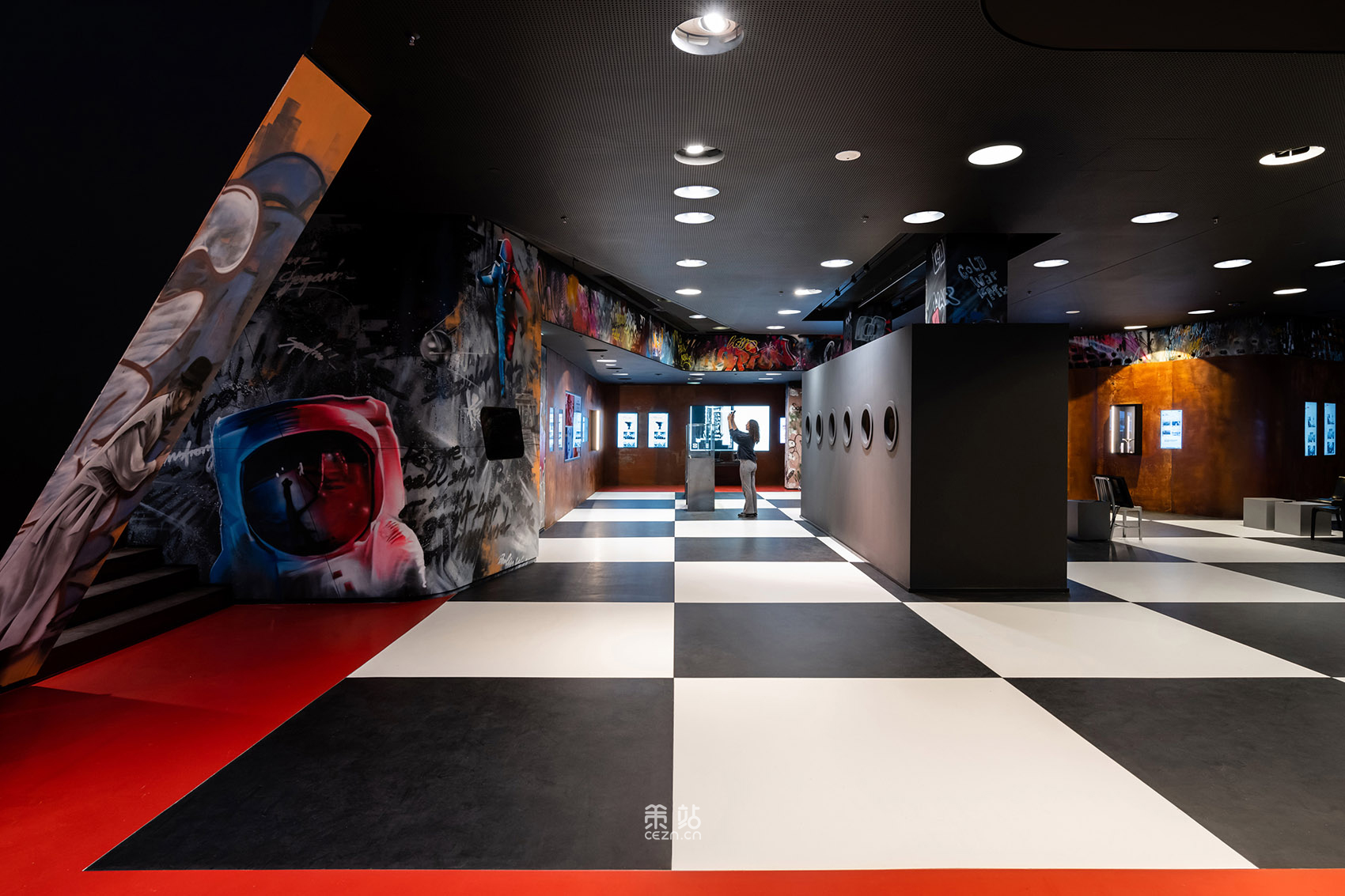
©Ilya Ivanov
柏林冷战博物馆是一座位于柏林市中心,介于勃兰登堡大门和洪堡论坛之间的博物馆。该博物馆于2022年11月正式向公众开放,博物馆面积超过1600平方米,拥有两个楼层。该博物馆采用了高科技手段,通过互动虚拟应用和展品的精心挑选,从多个角度展示了从1945年至1991年苏联解体期间的冷战斗争,使得多代人都能够理解这段历史。
The Berlin Cold War Museum is a museum located in the center of Berlin, between the Brandenburg Gate and the Humboldt Forum. The museum will officially open to the public in November 2022. The museum covers an area of more than 1,600 square meters and has two floors. The museum uses high-tech means to show the Cold War struggle during the Soviet Union from 1945 to 1991 from multiple perspectives through interactive virtual applications and carefully selected exhibits, making this history accessible to multiple
——————
项目地点:Unter den Linden 14, 10117 Berlin, www.coldwarmuseum.de
项目面积:1600㎡
项目负责人:Valeria Kashirina
团队:Lev Chestakov, Merle Kleinschumacher
Berlin Cold War Museum
---
柏林冷战博物馆的展陈设计非常注重可持续性,同时也强调了原有建筑结构的再利用。博物馆位于柏林市中心的菩提树下大街14号商业大楼中的两层,原先是某德国汽车品牌的展厅,于2019年8月之前使用。在新的设计方案中,保留了既有的展示区域、楼梯、走廊和入口通道的布局,并将原有固定装置的主要部分整合到了新的展示方案中。在选择合作公司时,项目团队特别注重地域性,并对所选用的材料进行了可持续性测试。
The exhibition design of the Berlin Cold War Museum pays great attention to sustainability, while also emphasizing the reuse of the original building structure. The museum is located on the two floors of a commercial building at No. 14 Unter den Linden Street in the center of Berlin. It was originally the exhibition hall of a German car brand and was used before August 2019. In the new design scheme, the existing layout of display areas, stairs, corridors and entryways was preserved, and the main part of the original fixtures were integrated into the new display scheme. When selecting a partner company, the project team paid particular attention to the locality and conducted sustainability tests on the selected materials.
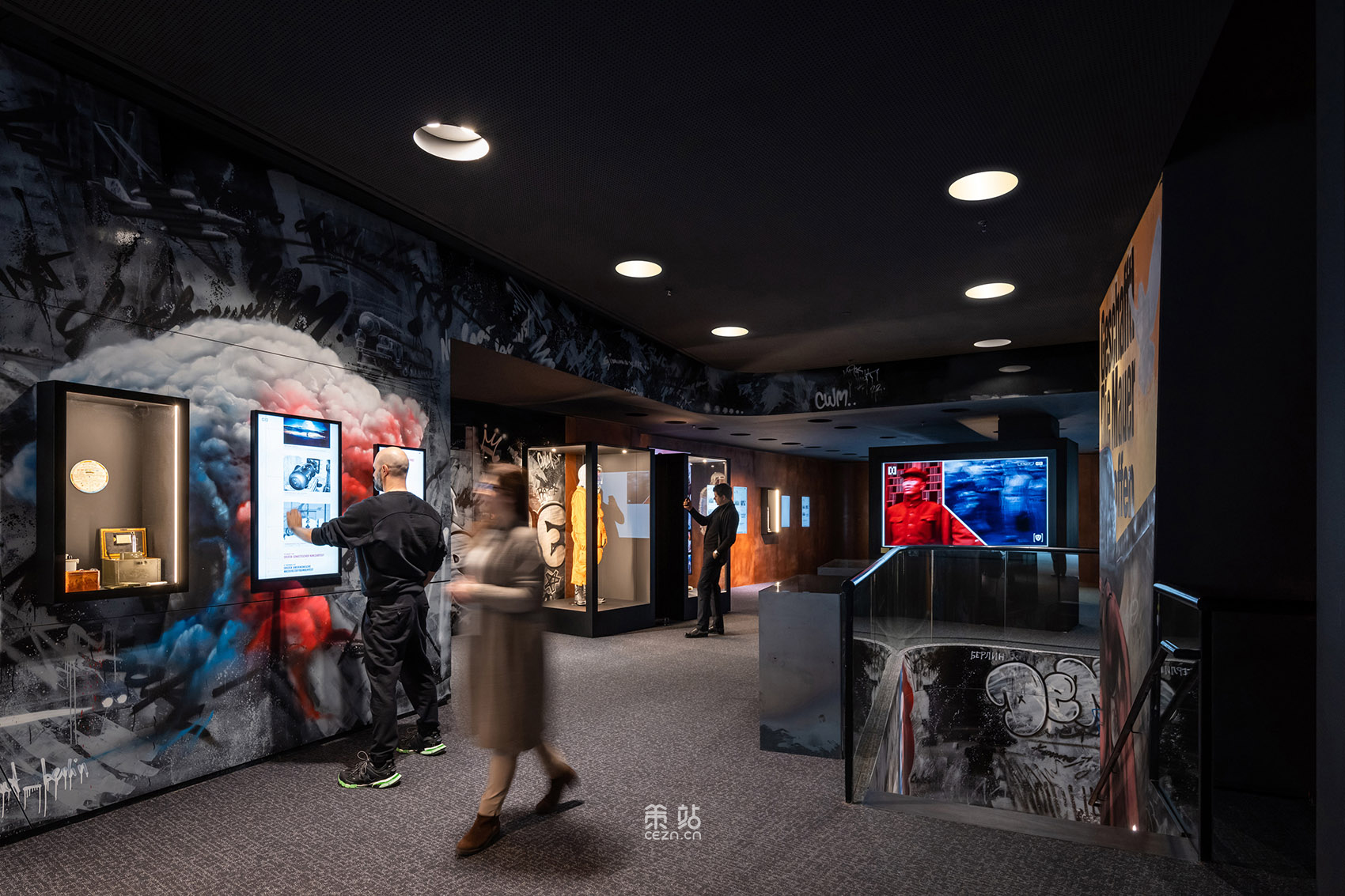
©Ilya Ivanov
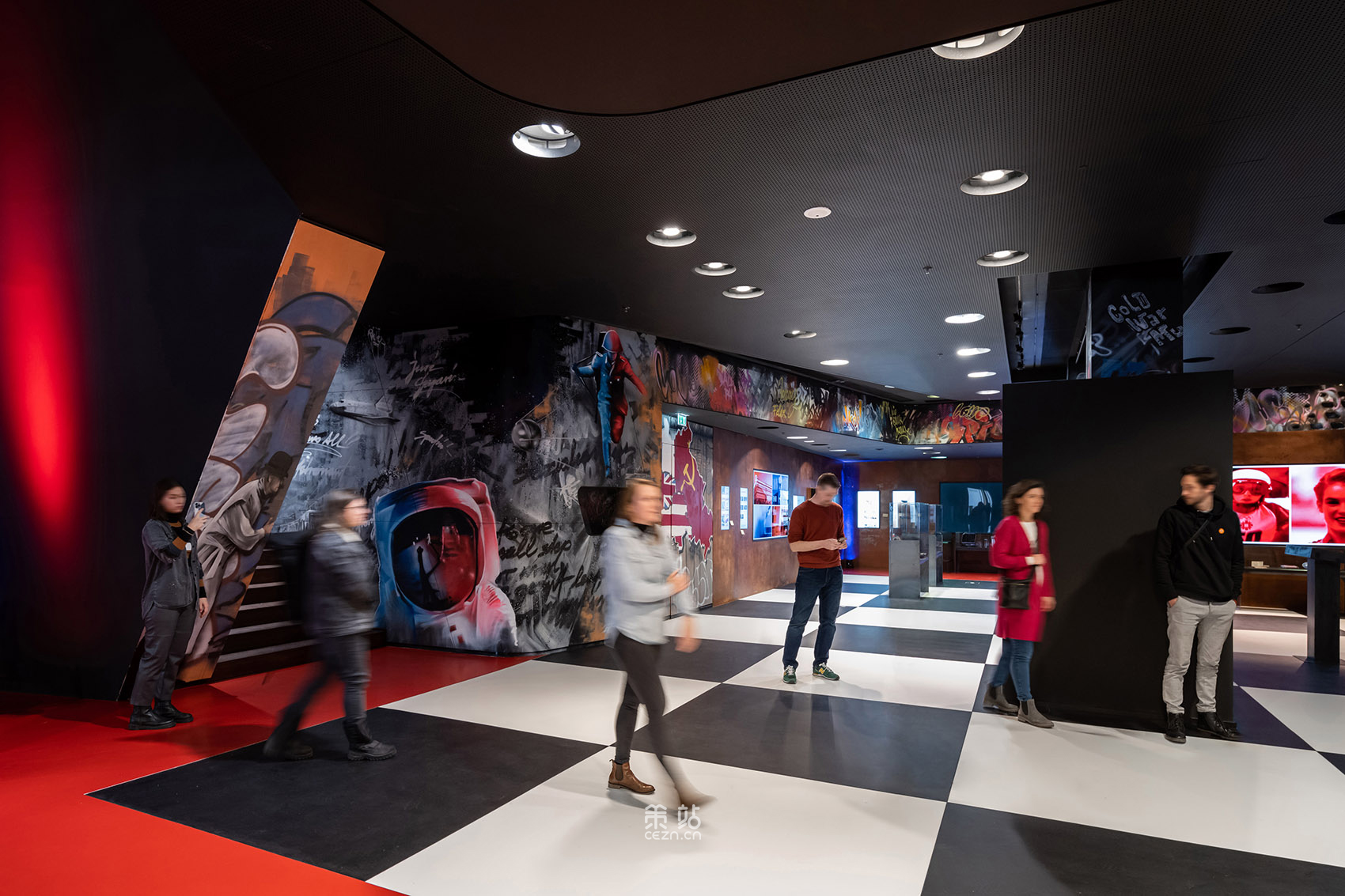
©Ilya Ivanov
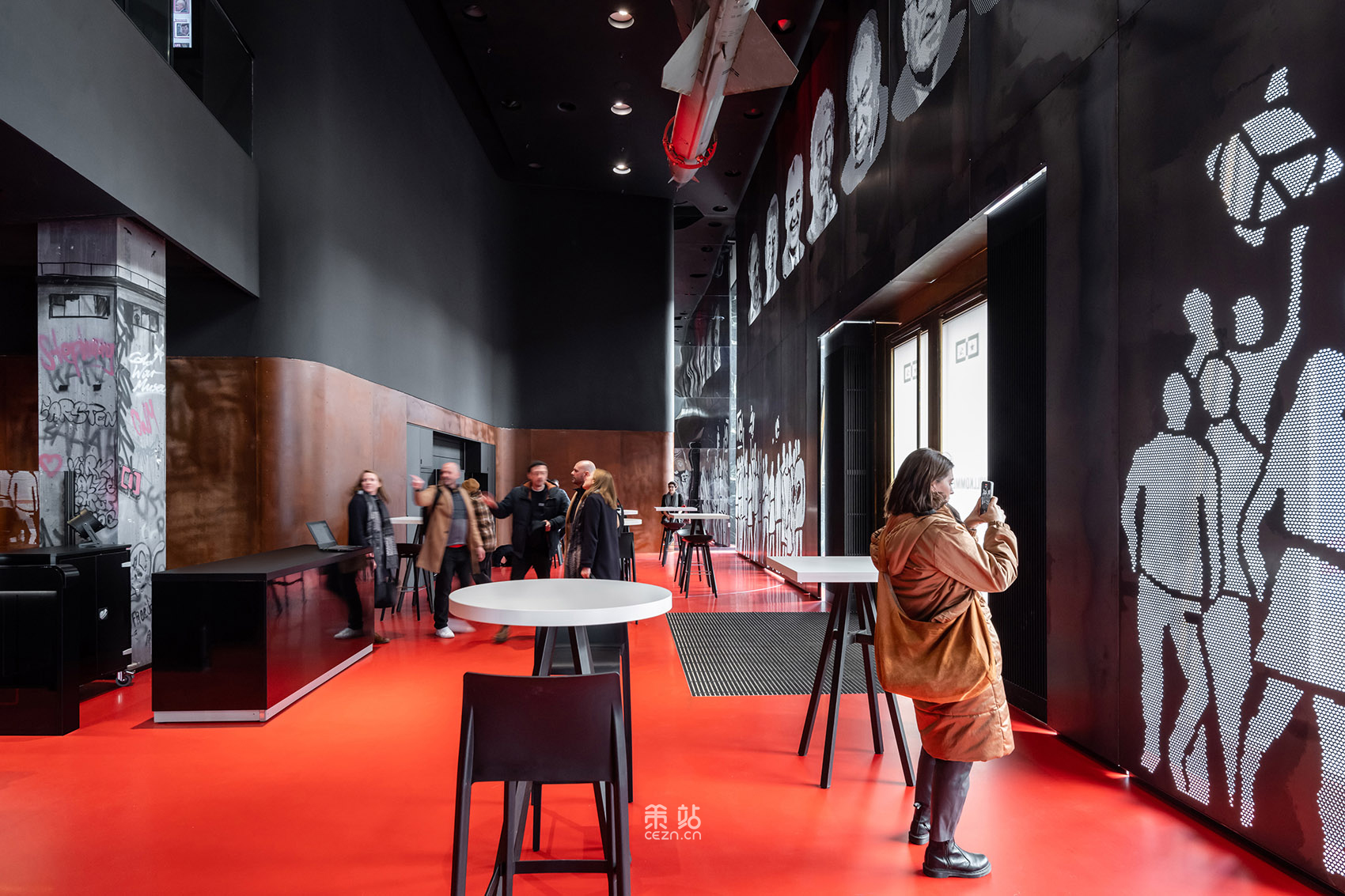
©Ilya Ivanov
在进入柏林冷战博物馆的门厅时,参观者将会穿过一道象征性的“铁幕”。这个装置由乌克兰艺术家Vanda Sakhatska设计,由20个钢制元件组成,遮挡住了面向街道一侧的窗户。铁幕的上半部分通过打孔方式印上了冷战时期活跃的数位政治家的肖像,包括赫尔穆特·科尔、罗纳德·里根、米哈伊尔·戈尔巴乔夫、约瑟夫·斯大林、温斯顿·丘吉尔、哈里·杜鲁门、尼基塔·赫鲁晓夫以及约翰·肯尼迪。下半部分展示了在“核裁军运动”期间团结起来的人群形象。
Upon entering the foyer of the Berlin Cold War Museum, visitors pass through a symbolic "Iron Curtain". Designed by Ukrainian artist Vanda Sakhatska, the installation consists of 20 steel elements that shade the windows on the street-facing side. The upper half of the Iron Curtain is perforated with portraits of several active Cold War statesmen, including Helmut Kohl, Ronald Reagan, Mikhail Gorbachev, Joseph Stalin, Winston Churchill, Harry Truman, Nikita Khrushchev, and John F. Kennedy. The bottom half shows an image of the crowd united during the "Campaign for Nuclear Disarmament".
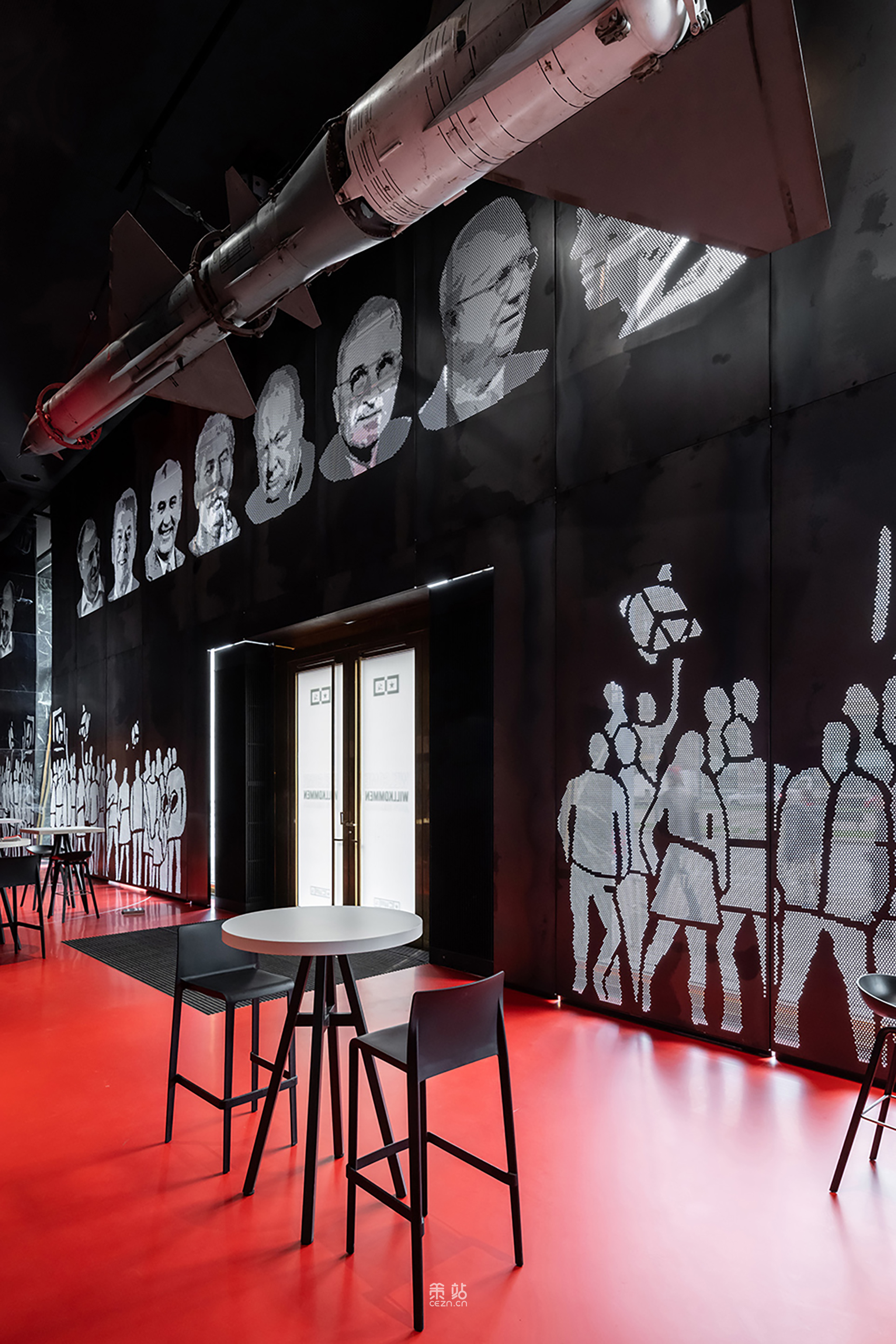
©Ilya Ivanov
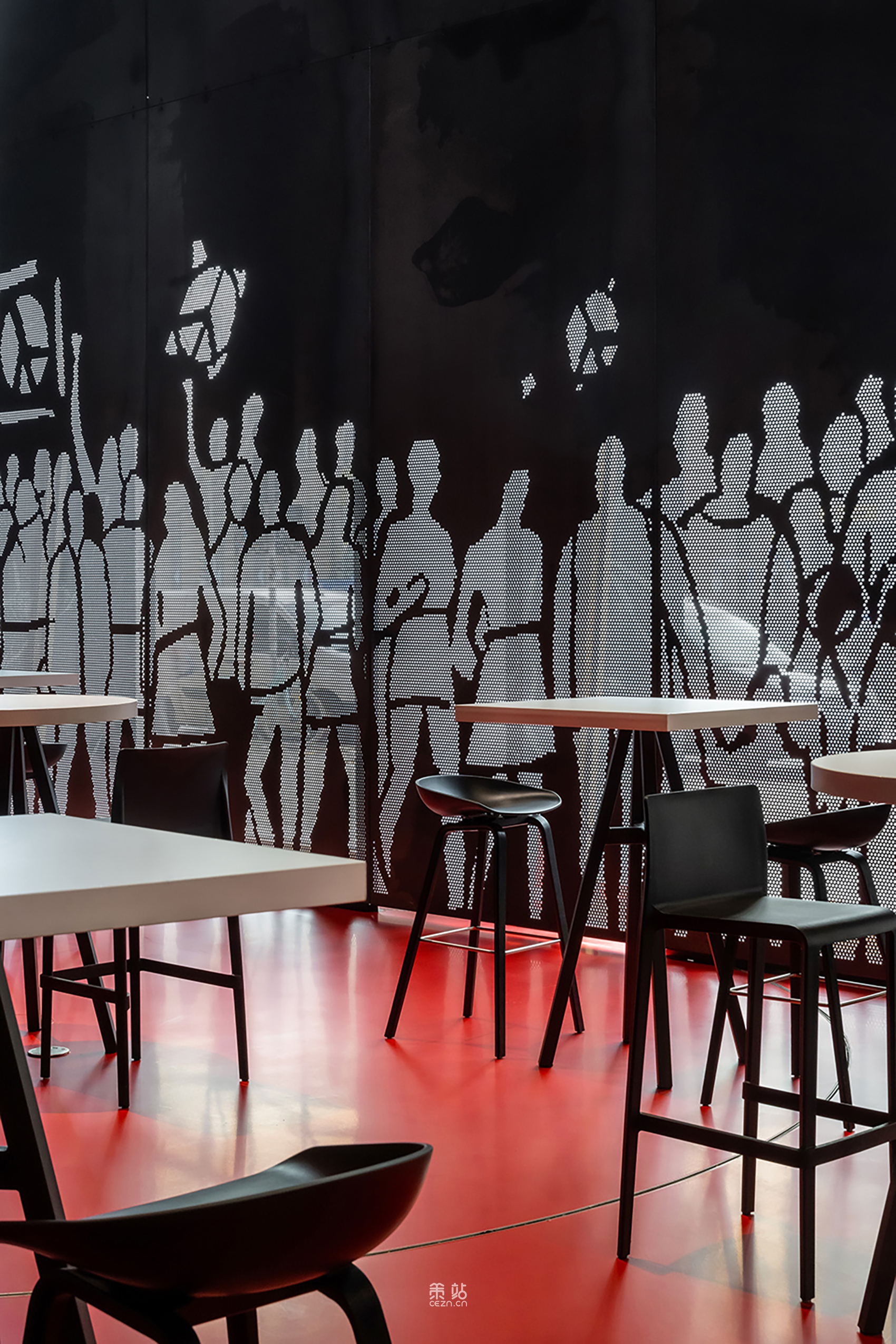
©Ilya Ivanov
当阳光透过窗户照进门厅时,参观者可以清晰地看到铁幕上的人物和肖像。从建筑外部看,穿孔板上的图案在白天并不清晰,但在灯火通明的晚上,它们将朝着林荫道的方向展现出引人注目的效果。与“铁幕”所带来的冷峻感和工业感不同的是,入口区域的地面闪耀着明亮的红色,给人带来活力和欢迎的感觉。
When sunlight shines through the windows into the foyer, visitors can clearly see the figures and portraits on the Iron Curtain. From the outside of the building, the patterns on the perforated panels are not clear during the day, but at night when they are fully lit, they will be displayed to dramatic effect towards the boulevard. Unlike the grim and industrial feel of the Iron Curtain, the ground in the entrance area shines bright red, giving it a sense of energy and welcome.
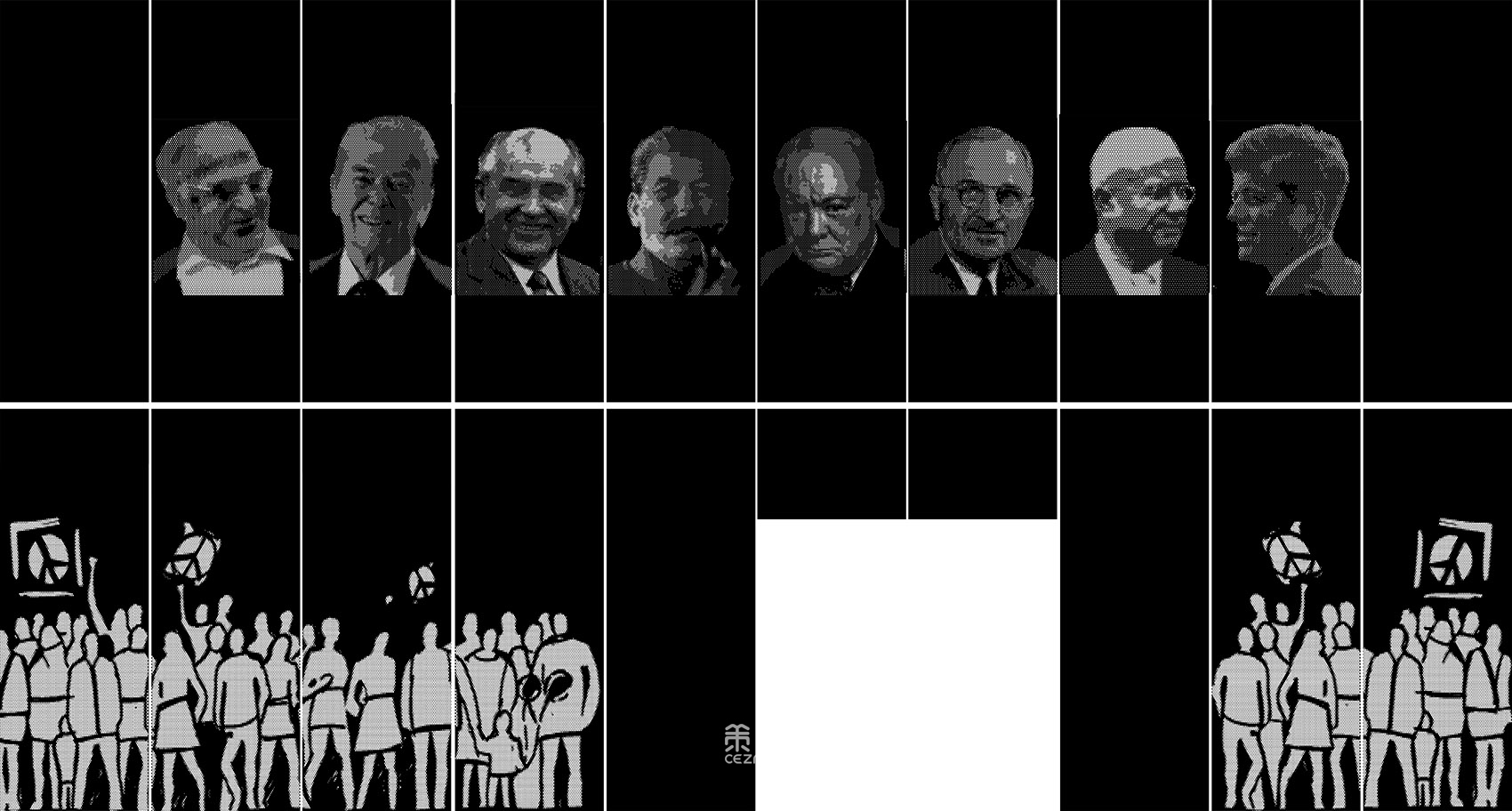
©Ilya Ivanov
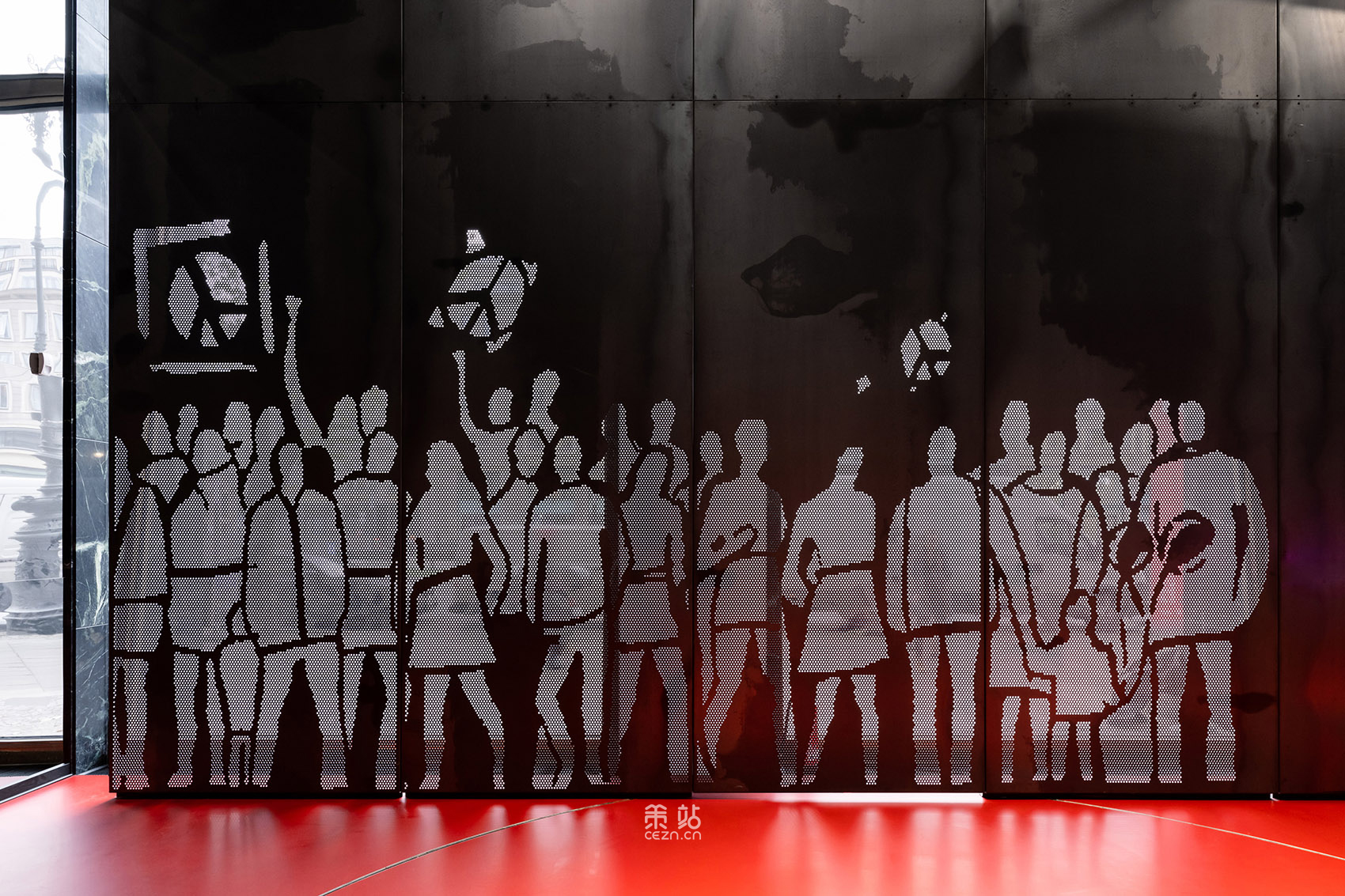
©Ilya Ivanov
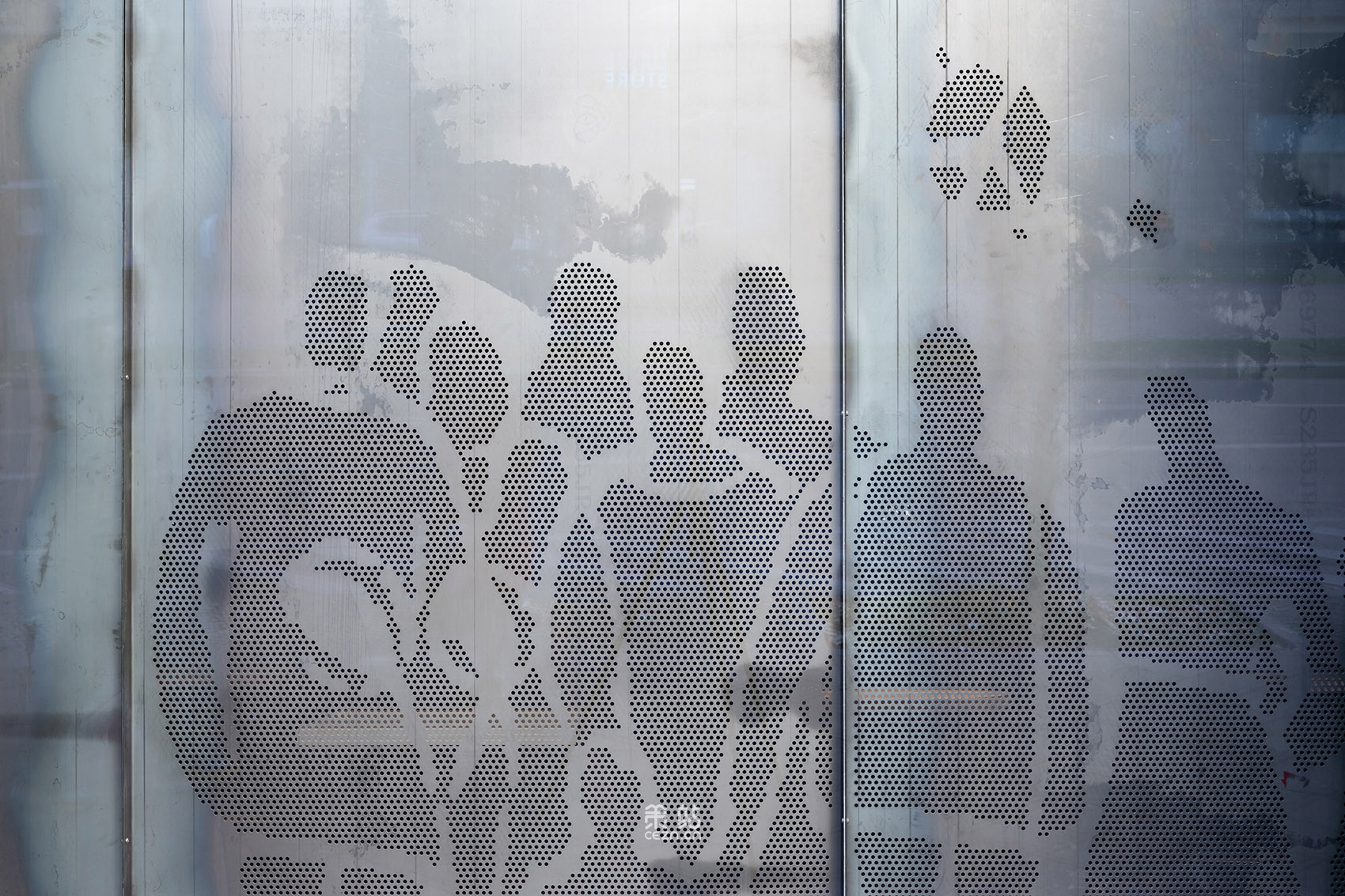
©Ilya Ivanov
首层展区通过一个类似水闸的入口进入。展览的第一部分采用了黑白相间的棋盘图案地面设计,参观者在其中穿梭,就像活动的棋子一样,以一种身临其境的方式体验冷战历史。展厅内的互动显示器将播放当代纪录片、照片、动画和见证者的视频。精心挑选的展品也会在展示柜中轮流呈现。游客可以通过扫描二维码激活语音导览,使用智能手机顺畅地完成观展之旅。
The exhibition area on the first floor is entered through an entrance similar to a sluice. The first part of the exhibition features a black and white checkerboard pattern floor design, through which visitors move like moving chess pieces, experiencing Cold War history in an immersive way. Interactive displays in the exhibition hall will feature contemporary documentaries, photographs, animations and videos of witnesses. Carefully selected exhibits are also presented in rotation in the showcases. Visitors can activate the audio guide by scanning the QR code, and use their smartphones to smoothly complete the exhibition tour.
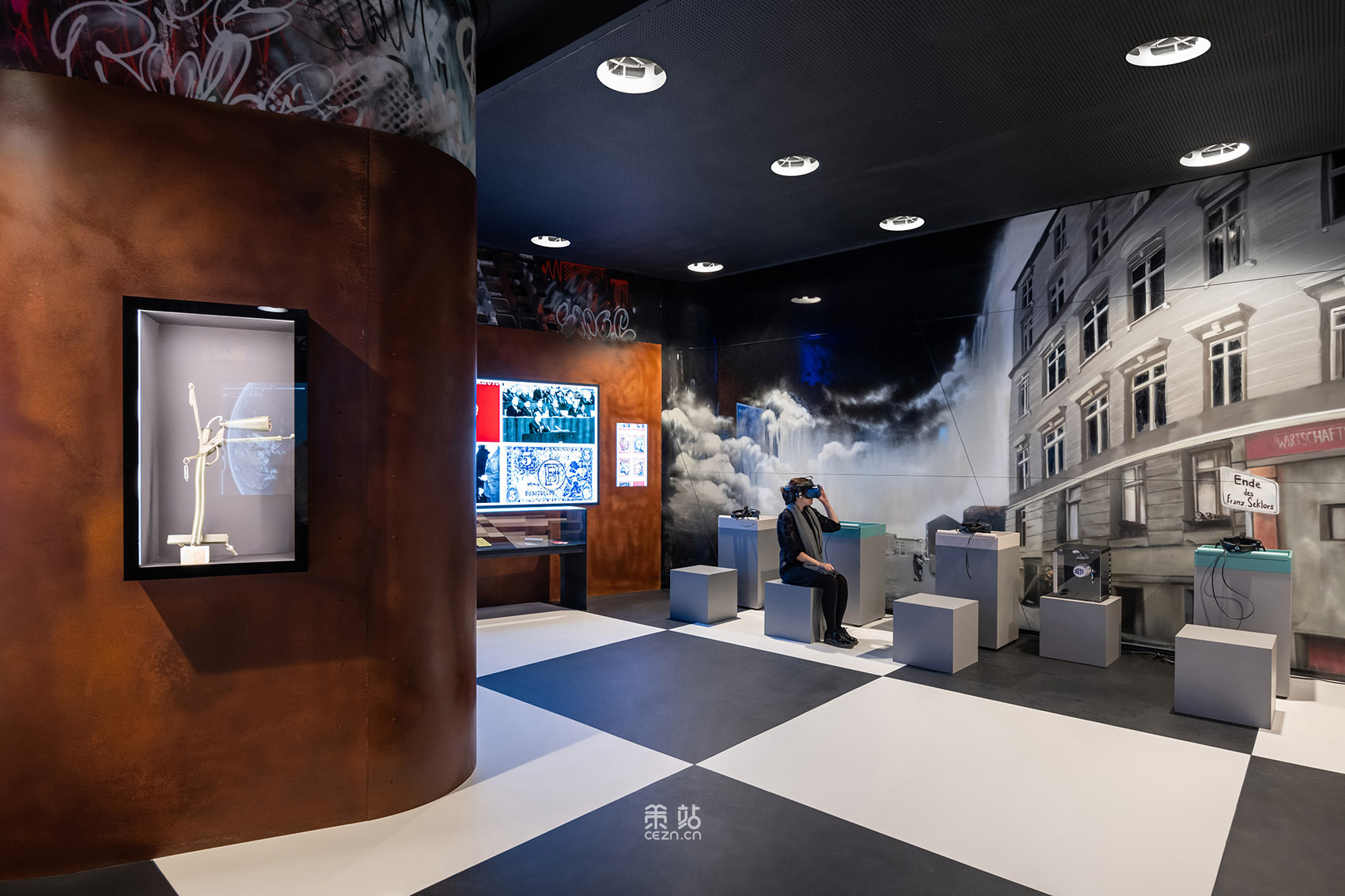
©Ilya Ivanov

©Ilya Ivanov
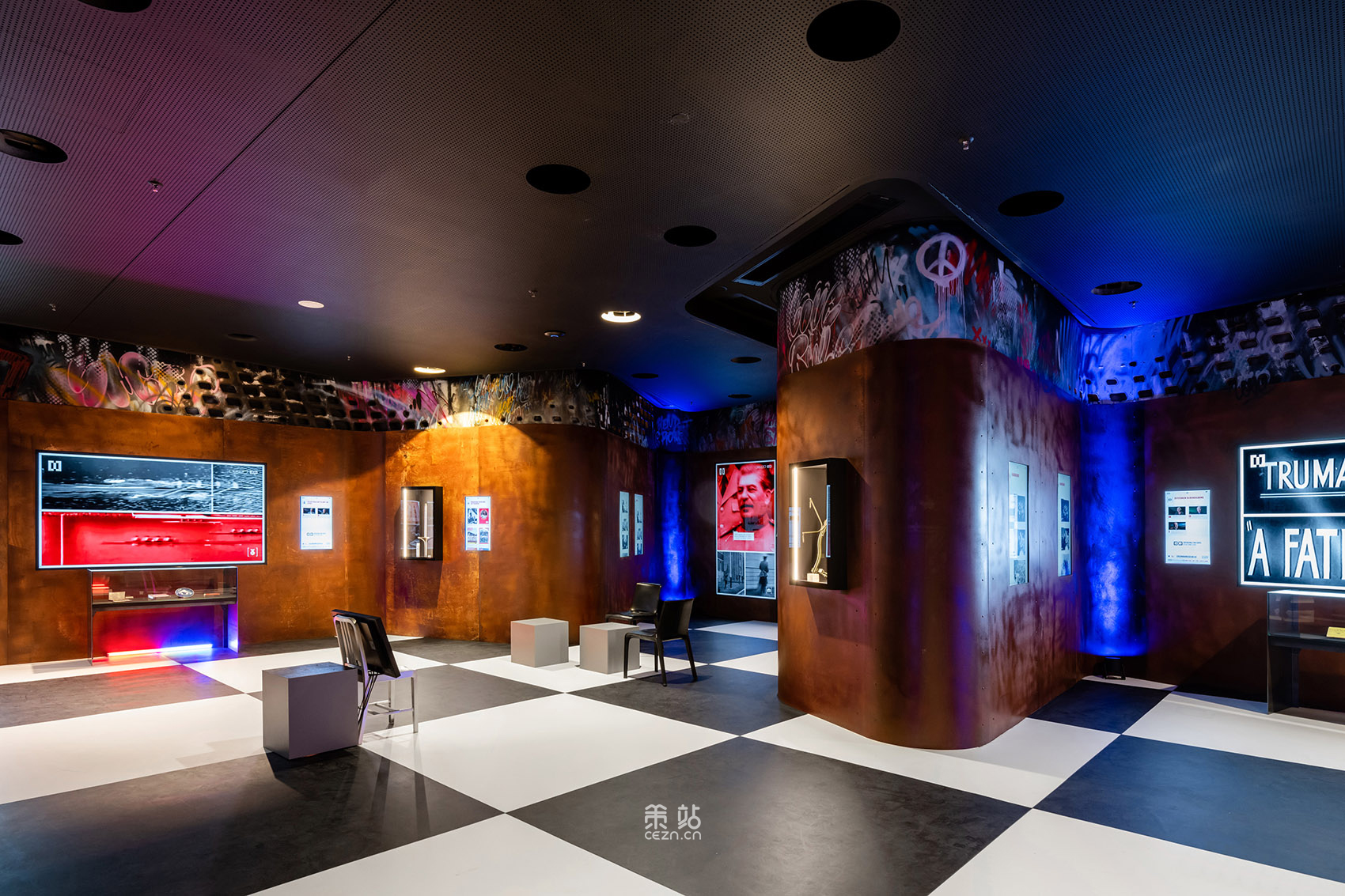
©Ilya Ivanov
这座博物馆的内饰设计充满了创意和细节。特别值得一提的是墙壁上嵌有的显示器,它们被包覆在刷成锈红色的耐候钢材料中,营造出一种老旧、工业的氛围。在较暗的房间中,黑色天花板的映衬进一步加强了这种氛围。同时,这种材料产生的锈迹也与Enrico Mau和Fabian Brueckner创作的涂鸦墙壁形成了呼应的关系,共同诠释了冷战时期的历史和文化。
The interior design of this museum is full of creativity and details. Of particular note are the displays embedded in the walls, which are clad in weathering steel painted rust red, creating an old, industrial vibe. In the darker room, the black ceiling accentuates the ambiance even further. At the same time, the rust produced by this material also forms an echo relationship with the graffiti walls created by Enrico Mau and Fabian Brueckner, jointly interpreting the history and culture of the Cold War period.
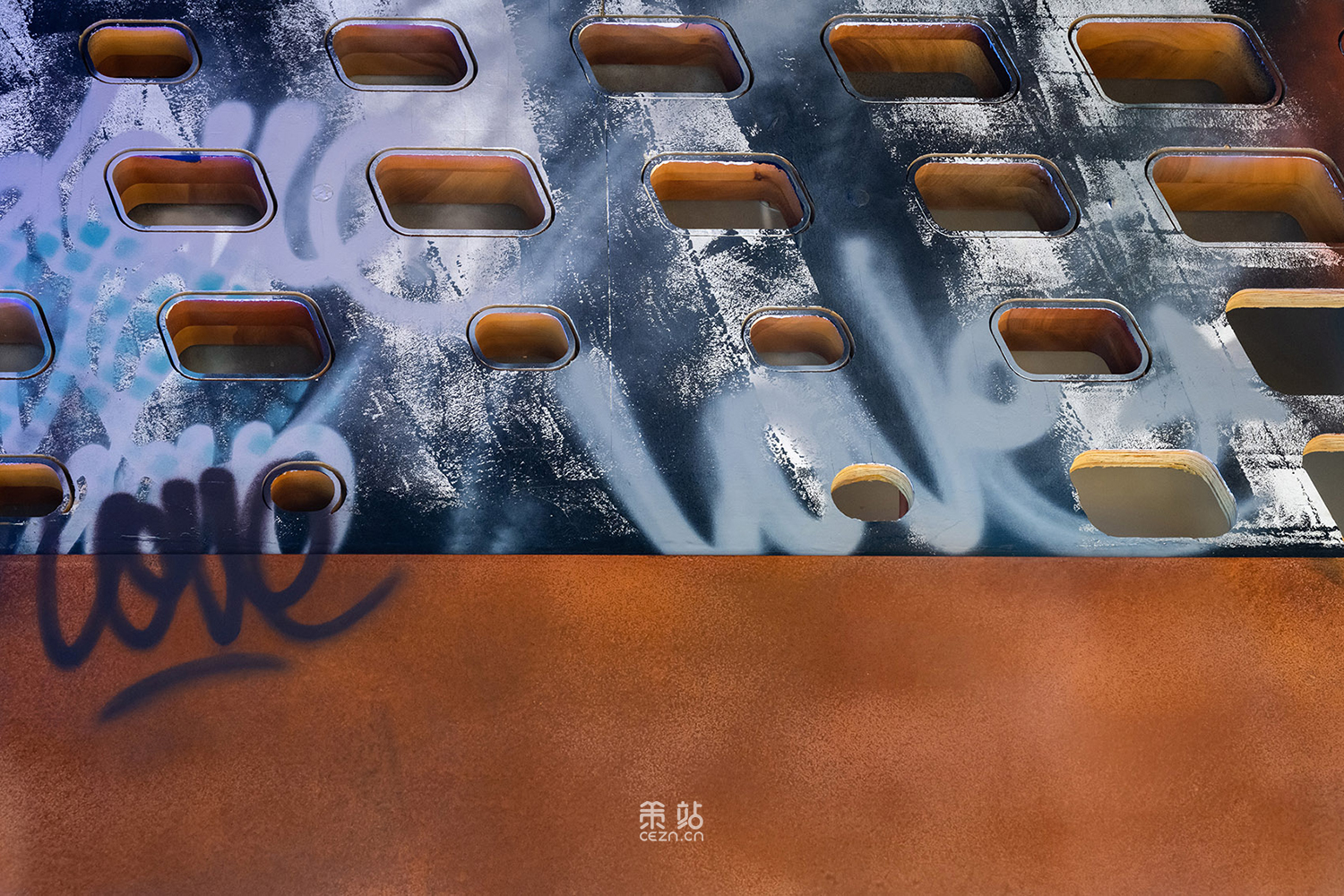
©Ilya Ivanov
在楼梯对面的展览区域,参观者可以沉浸在一个仿佛置身于柏林街头的环境中。这里的展品包括了Boris Hars-Tschachotin的装置作品,参观者还可以通过VR眼镜的体验,从不同角度观看东德士兵Conrad Schumann那著名的“自由一跃”事件。这一事件发生在1961年8月15日,在柏林Bernauer和Ruppiner街道的封锁边界转角处,如今这里已经成为了一个象征自由和团结的标志。整个展览区域的布局和设计,旨在让参观者感受到当时柏林墙所带来的分裂和隔离,以及人们为了追求自由而作出的努力和牺牲。
In the exhibition area opposite the stairs, visitors can immerse themselves in an environment that feels like they are on the streets of Berlin. The exhibits here include installation works by Boris Hars-Tschachotin, and visitors can also watch East German soldier Conrad Schumann's famous "Leap to Freedom" from different angles through the experience of VR glasses. The incident took place on August 15, 1961, at the corner of the blocked border in Berlin's Bernauer and Ruppiner streets, which has become a symbol of freedom and solidarity today. The layout and design of the entire exhibition area aims to make visitors feel the division and isolation brought about by the Berlin Wall at that time, as well as the efforts and sacrifices made by people in pursuit of freedom.
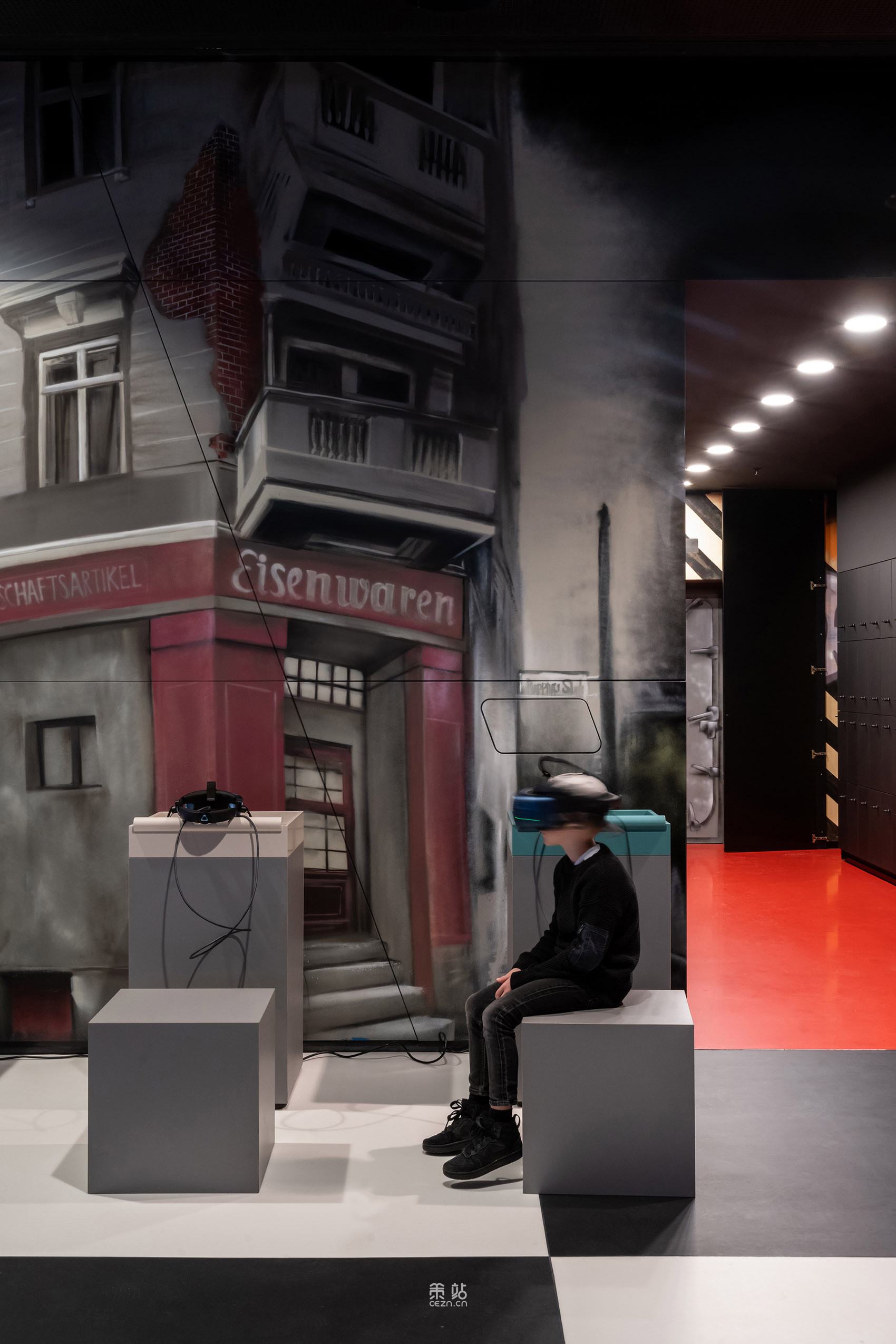
©Ilya Ivanov
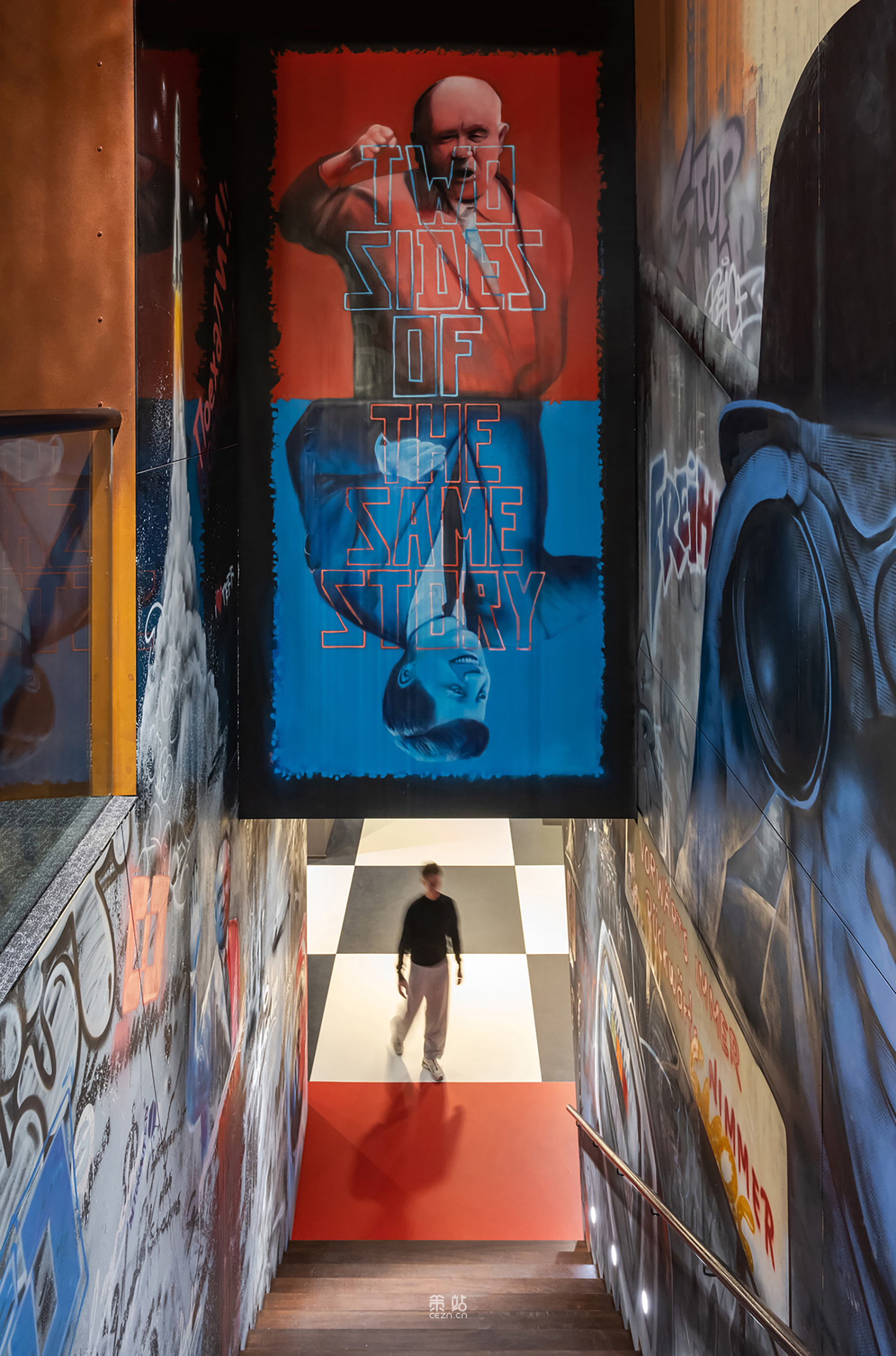
©Ilya Ivanov
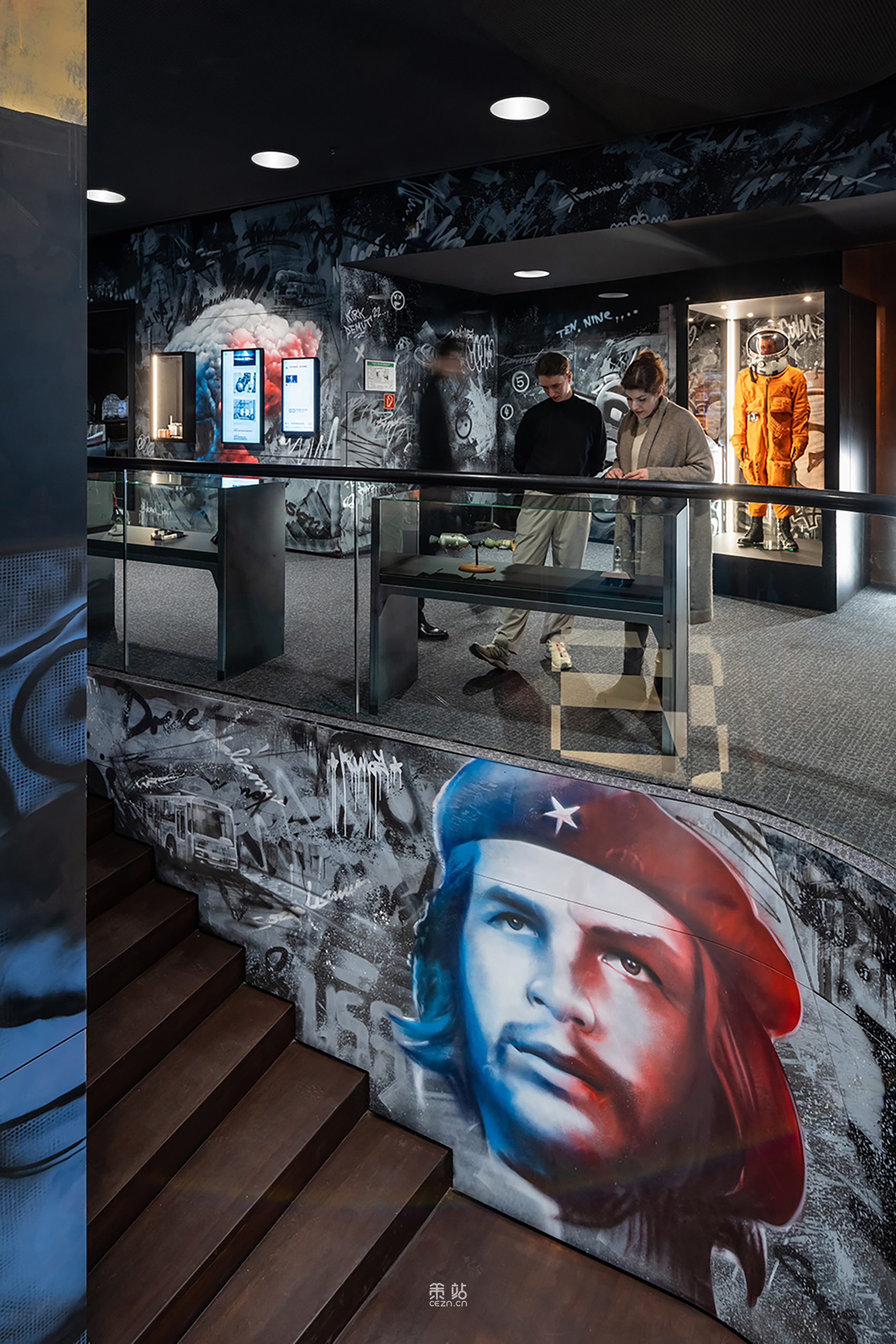
©Ilya Ivanov
这些主题涂鸦不仅是装饰,它们也是博物馆整体设计的一部分,强调了博物馆的核心概念,并为游客提供了更深层次的参观体验。同时,从上方看下去,不同区域之间的联系也更加明显。这种设计方式既满足了美学需求,又能够传达历史故事的复杂性,增强了游客的参观体验。
These themed graffiti are not just decoration, they are also part of the overall design of the museum, emphasizing the core concept of the museum and providing visitors with a deeper visiting experience. At the same time, when viewed from above, the connection between different areas is more obvious. This design approach not only meets the aesthetic needs, but also conveys the complexity of the historical story, enhancing the visitor experience.
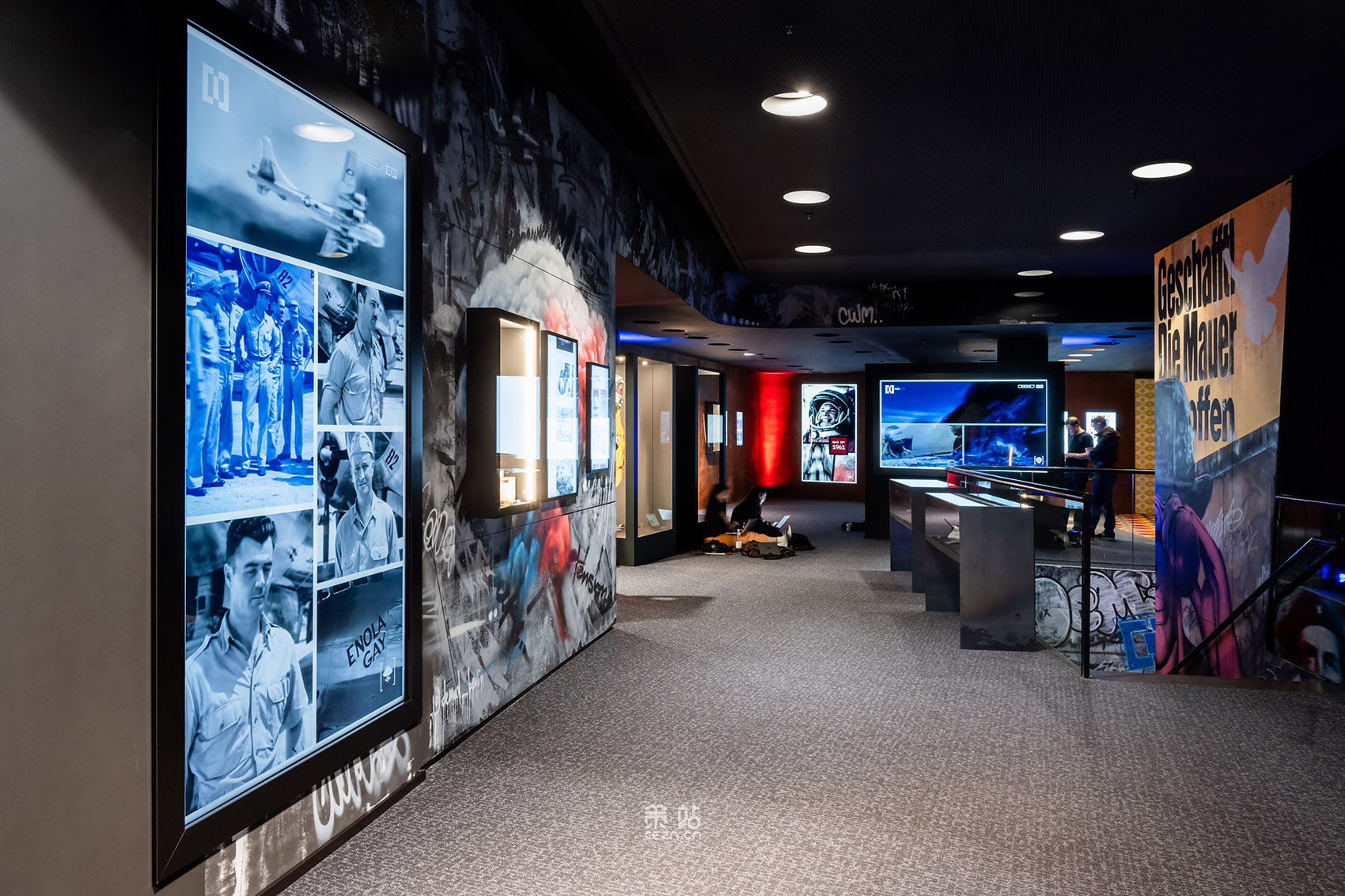
©Ilya Ivanov
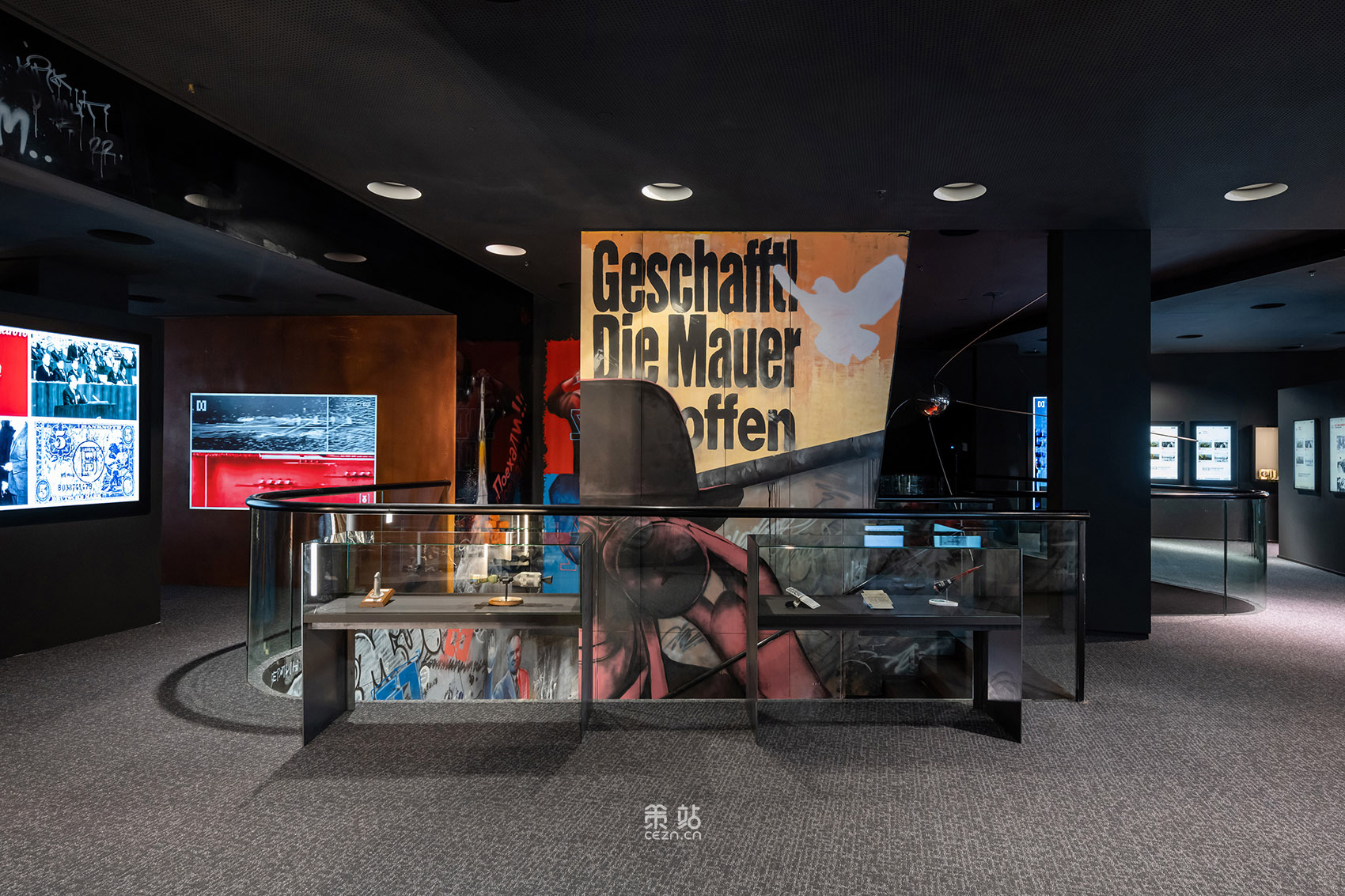
©Ilya Ivanov
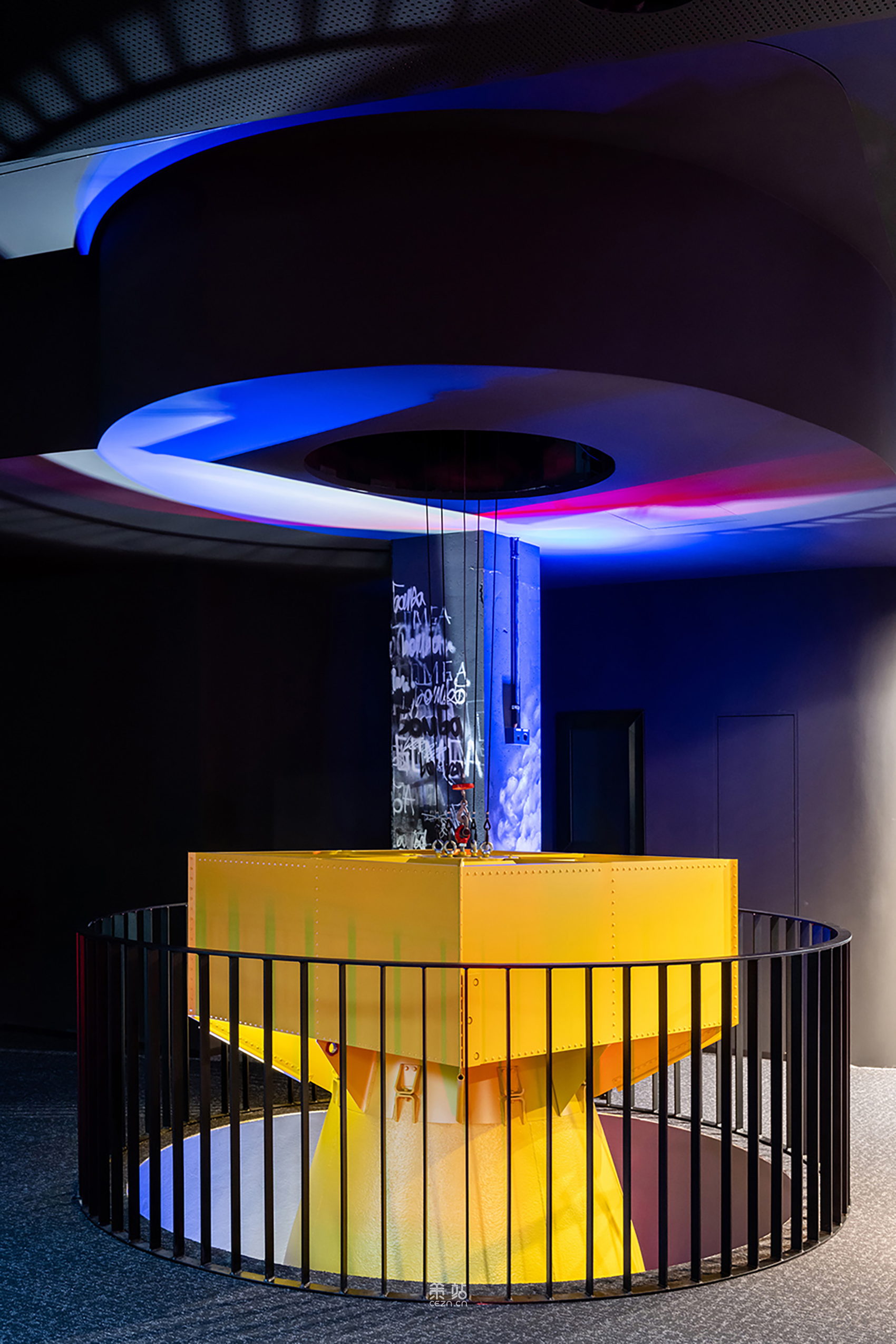
©Ilya Ivanov
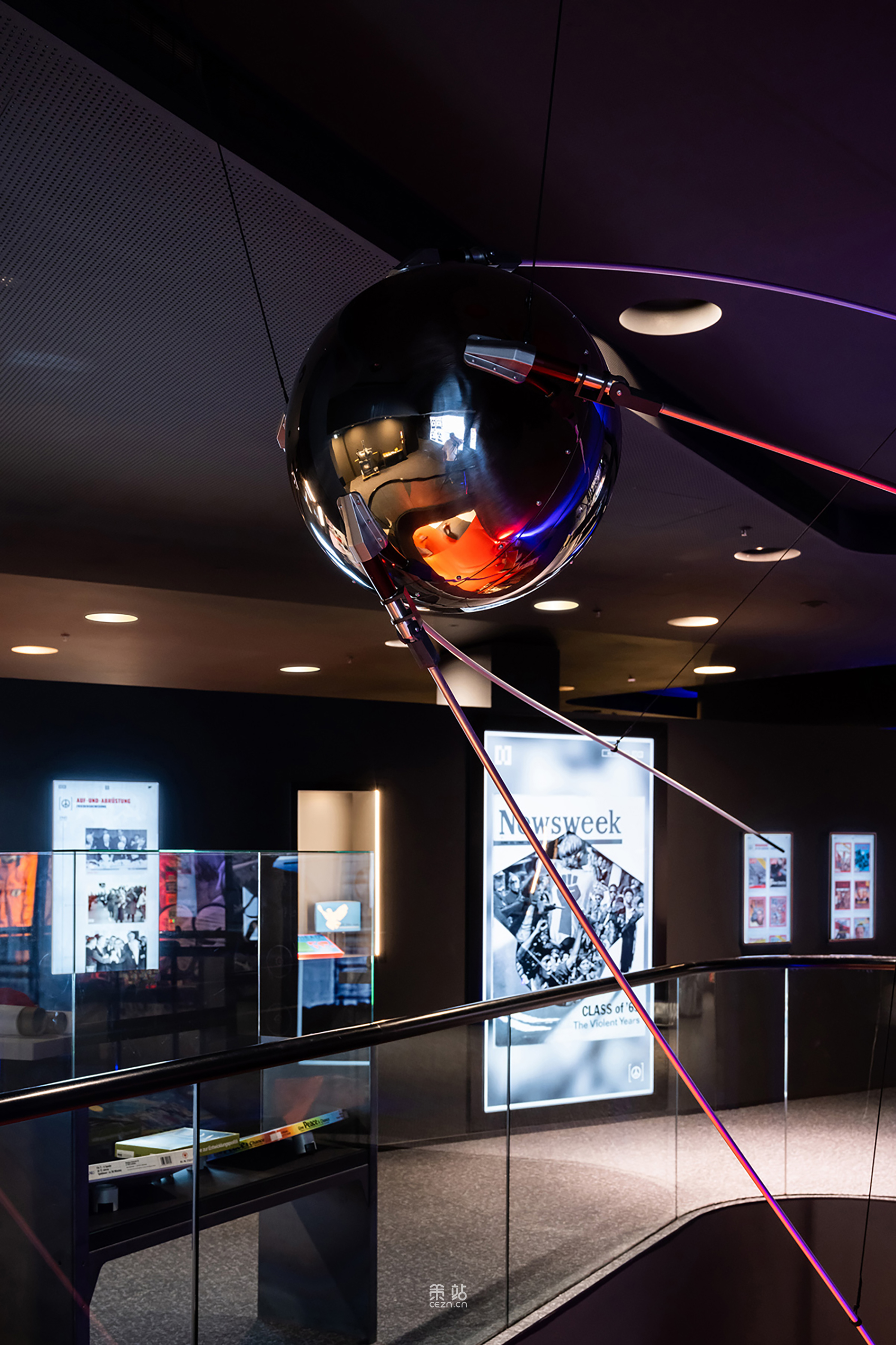
©Ilya Ivanov
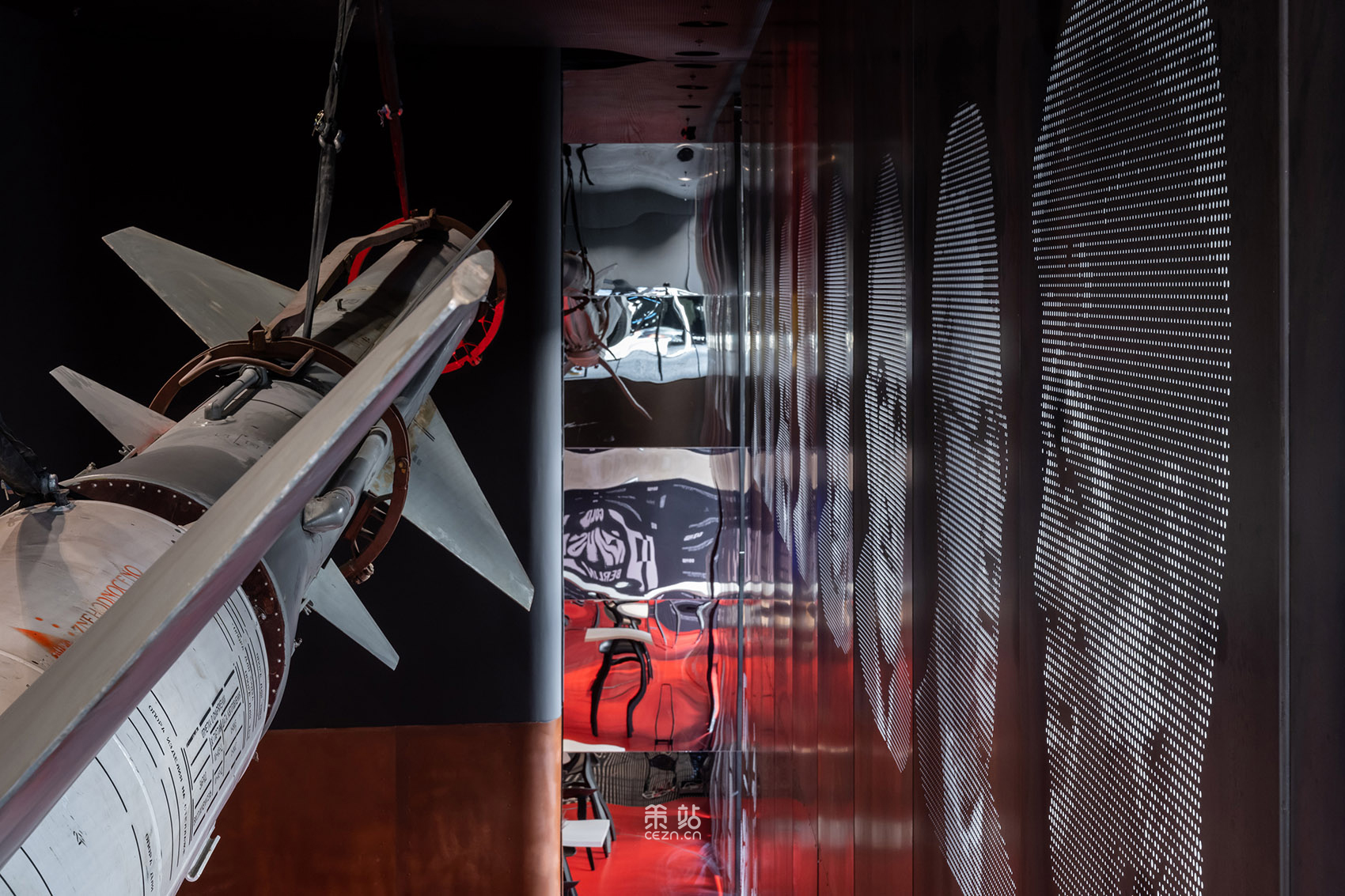
©Ilya Ivanov
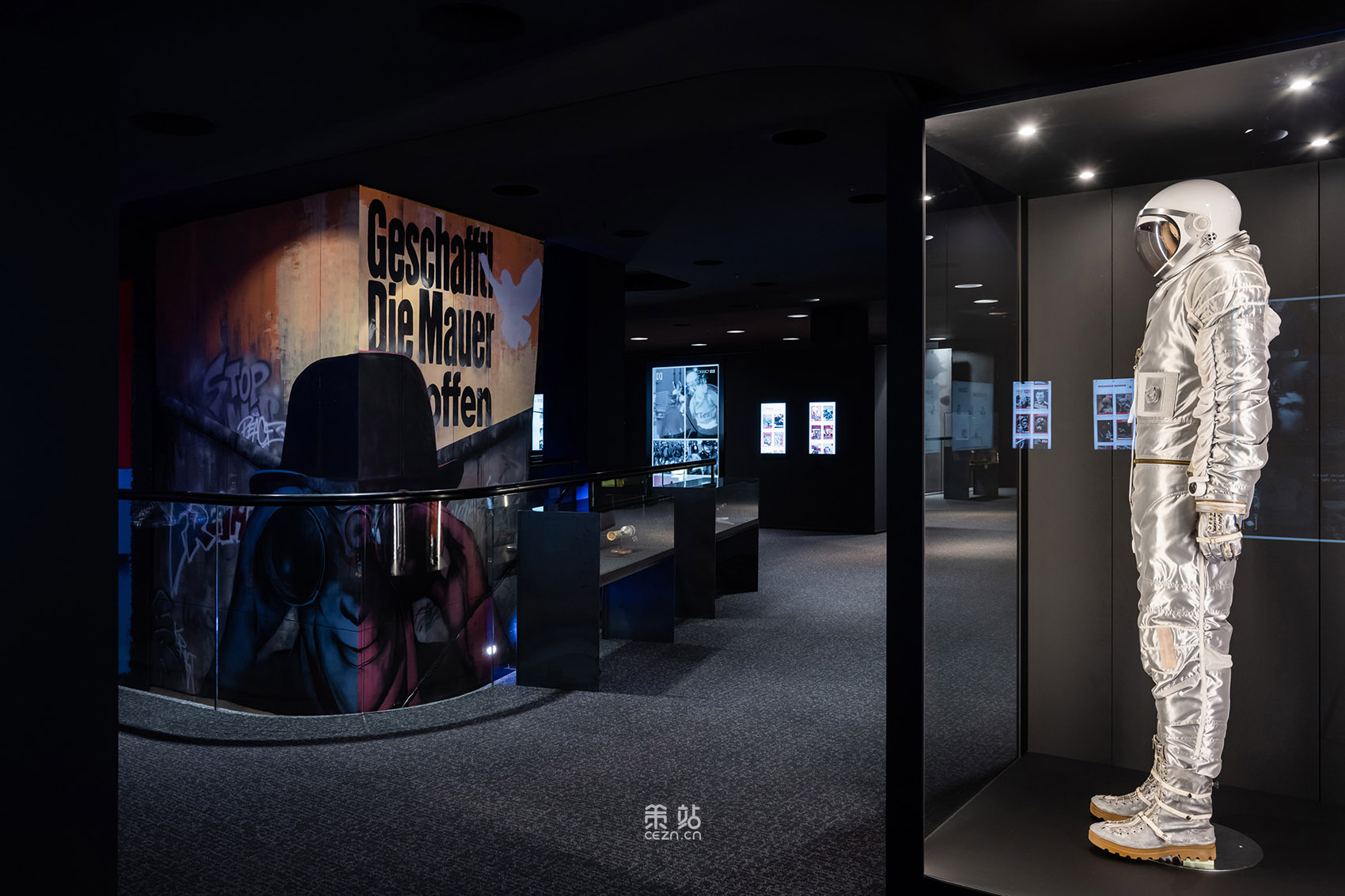
©Ilya Ivanov
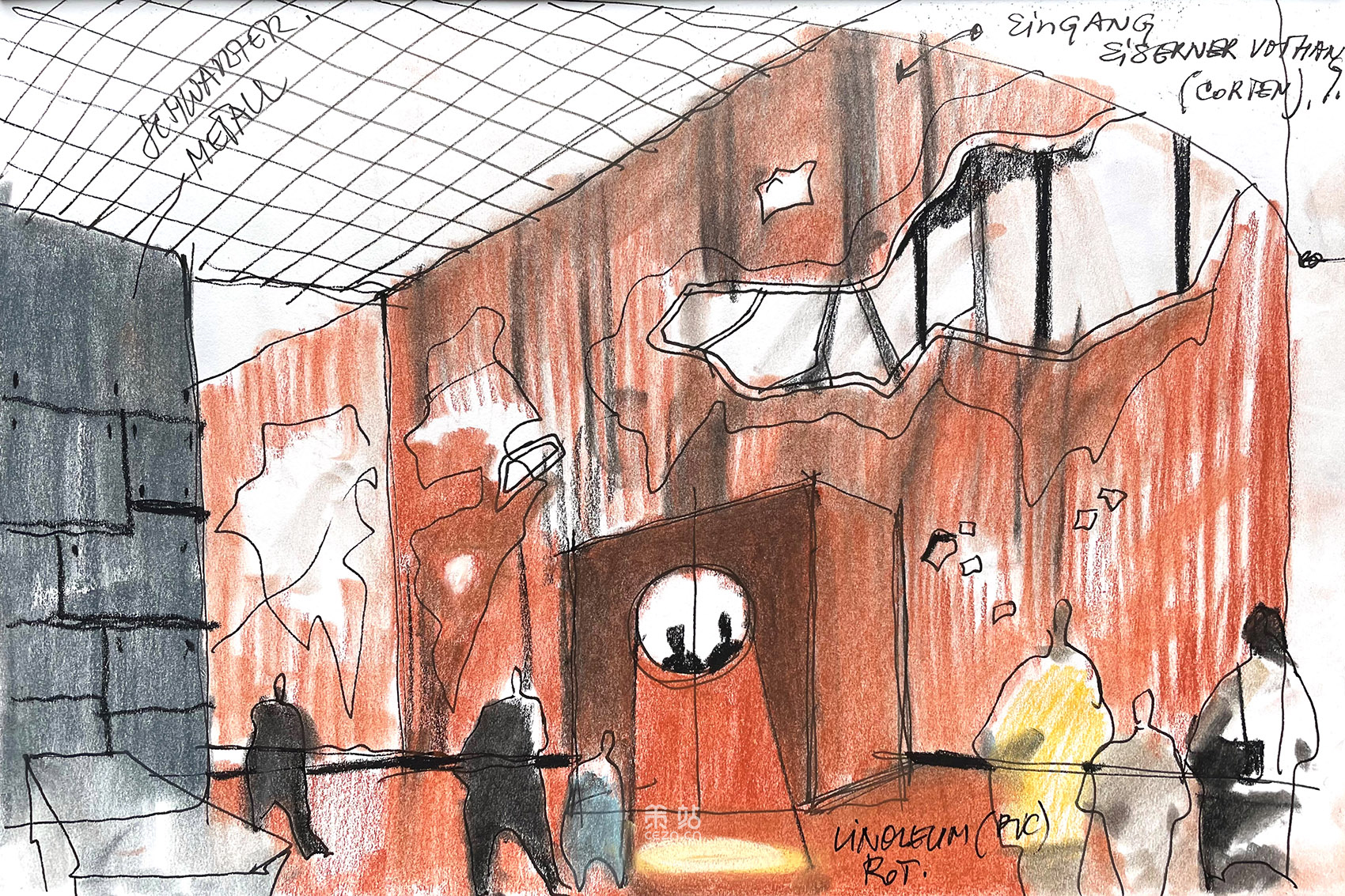
©Sergei Tchoban
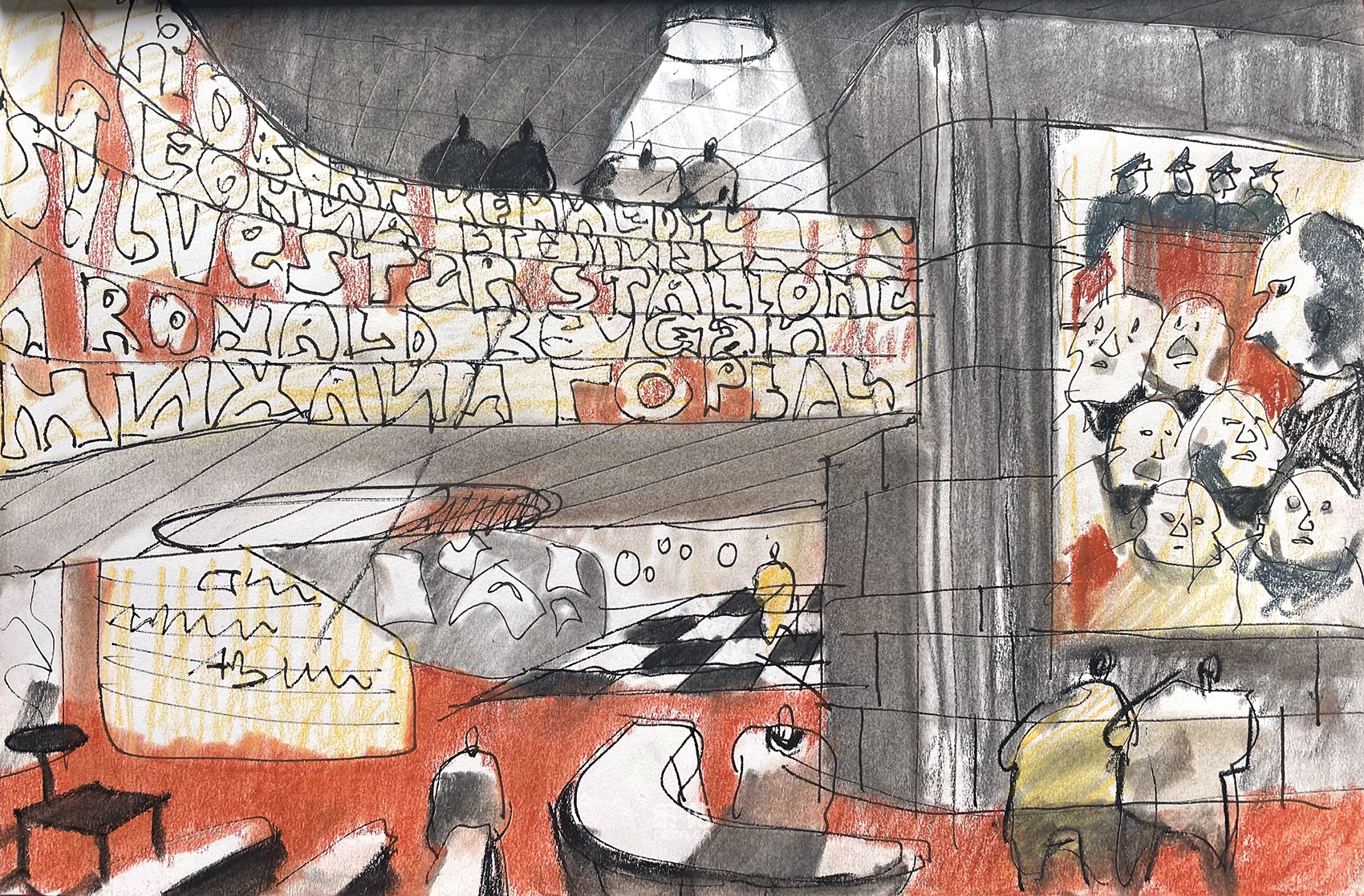
©Sergei Tchoban
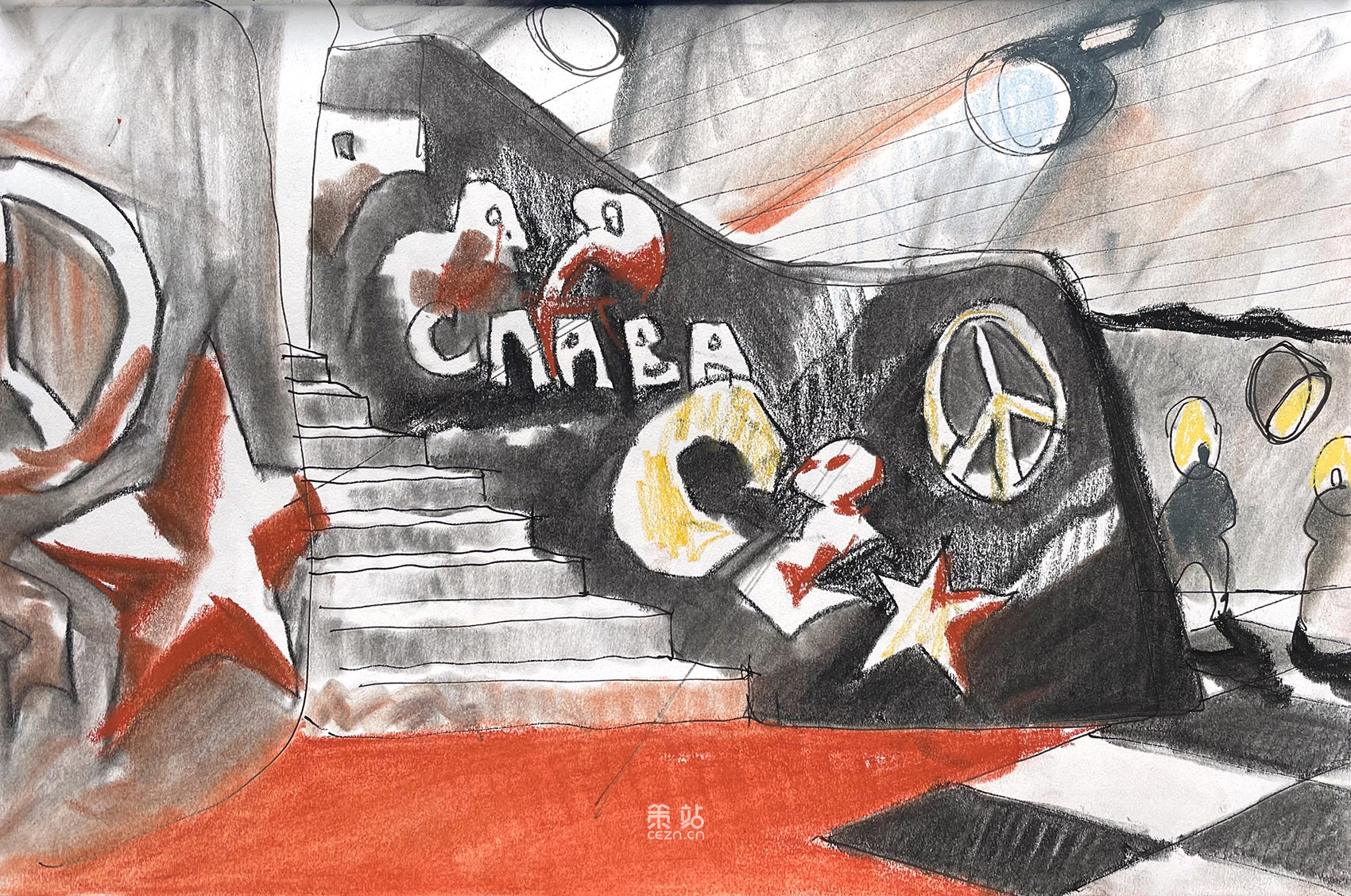
©Sergei Tchoban
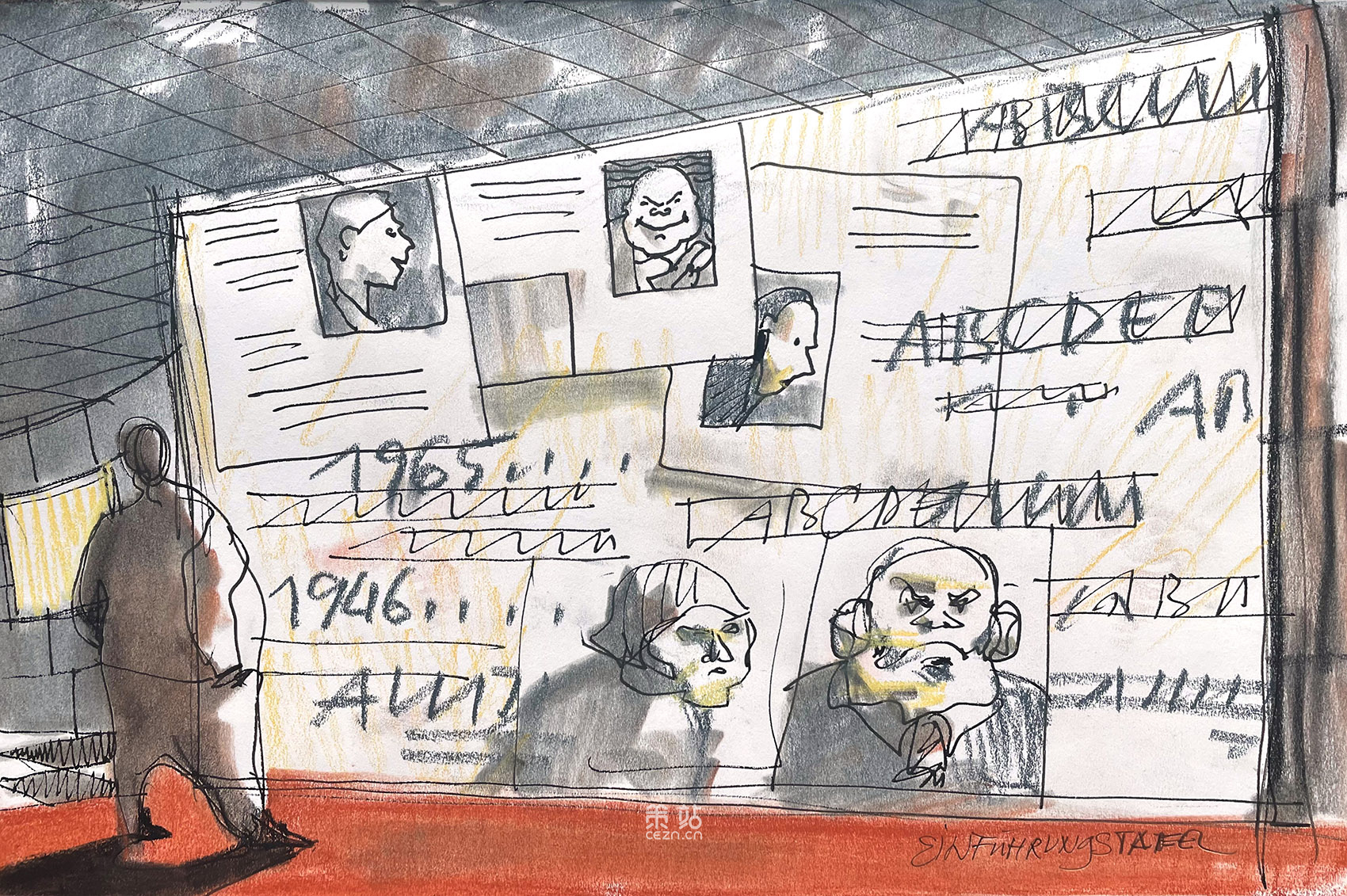
©Sergei Tchoban
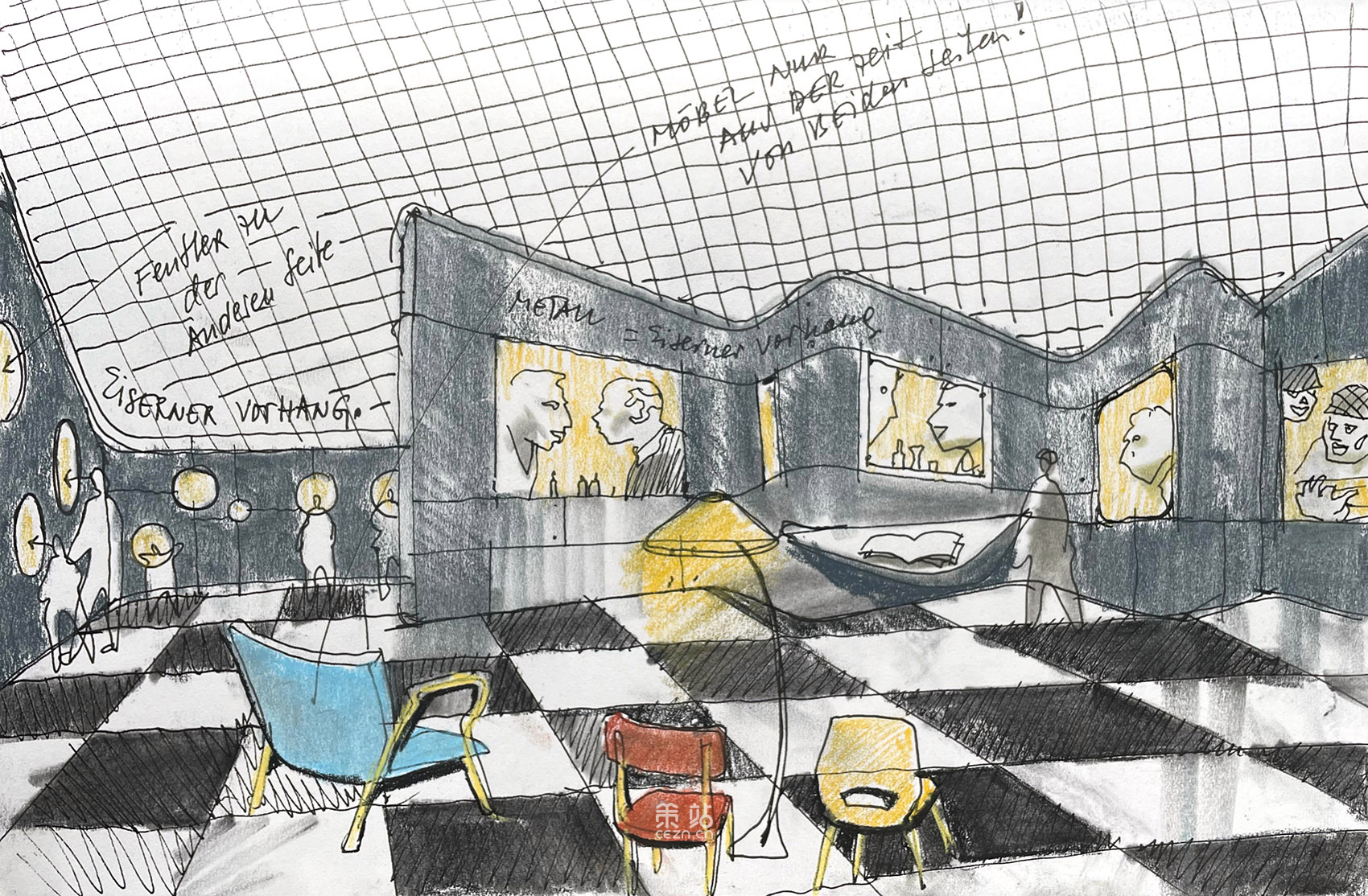
©Sergei Tchoban
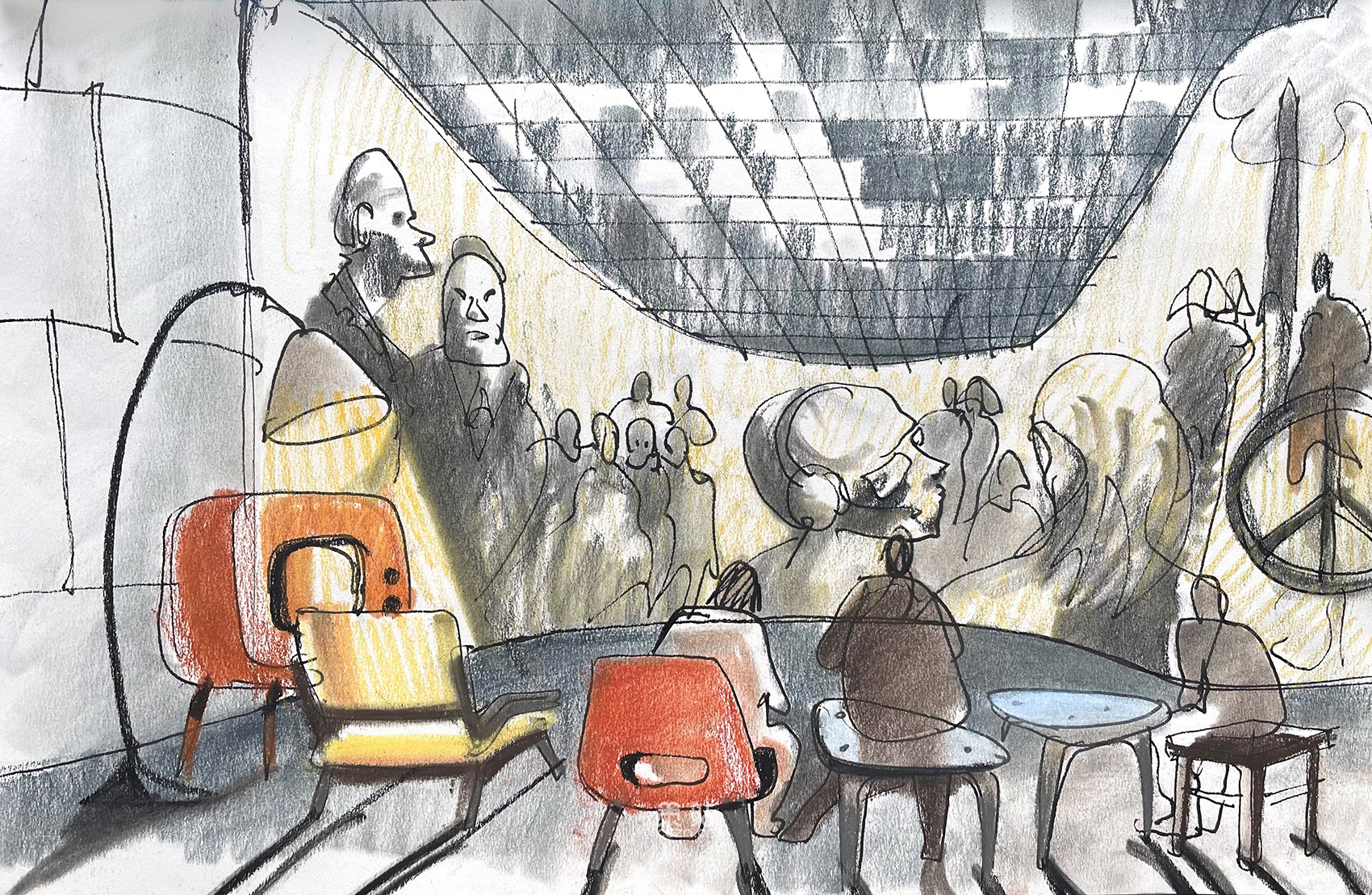
©Sergei Tchoban
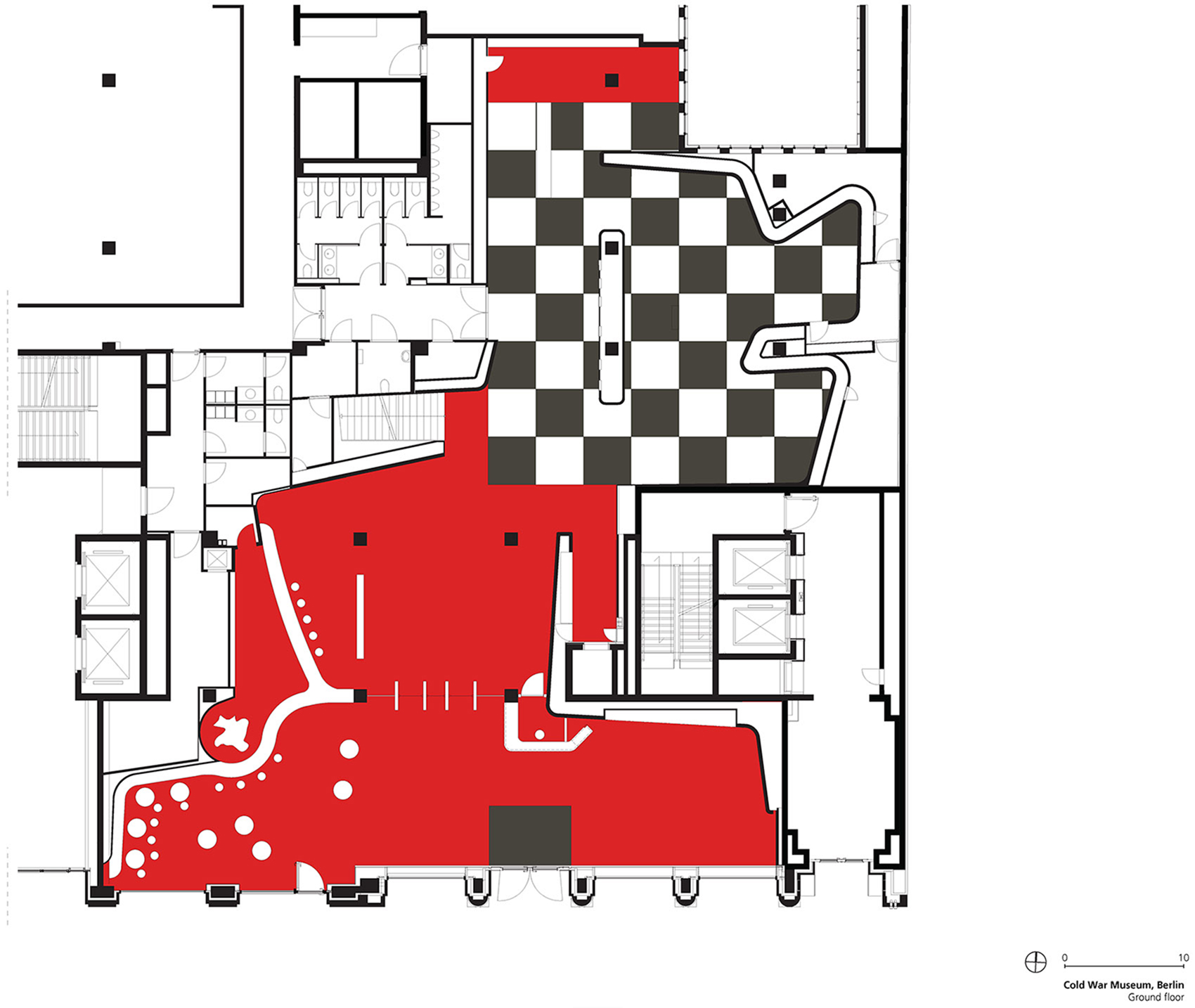
©TCHOBAN VOSS Architekten
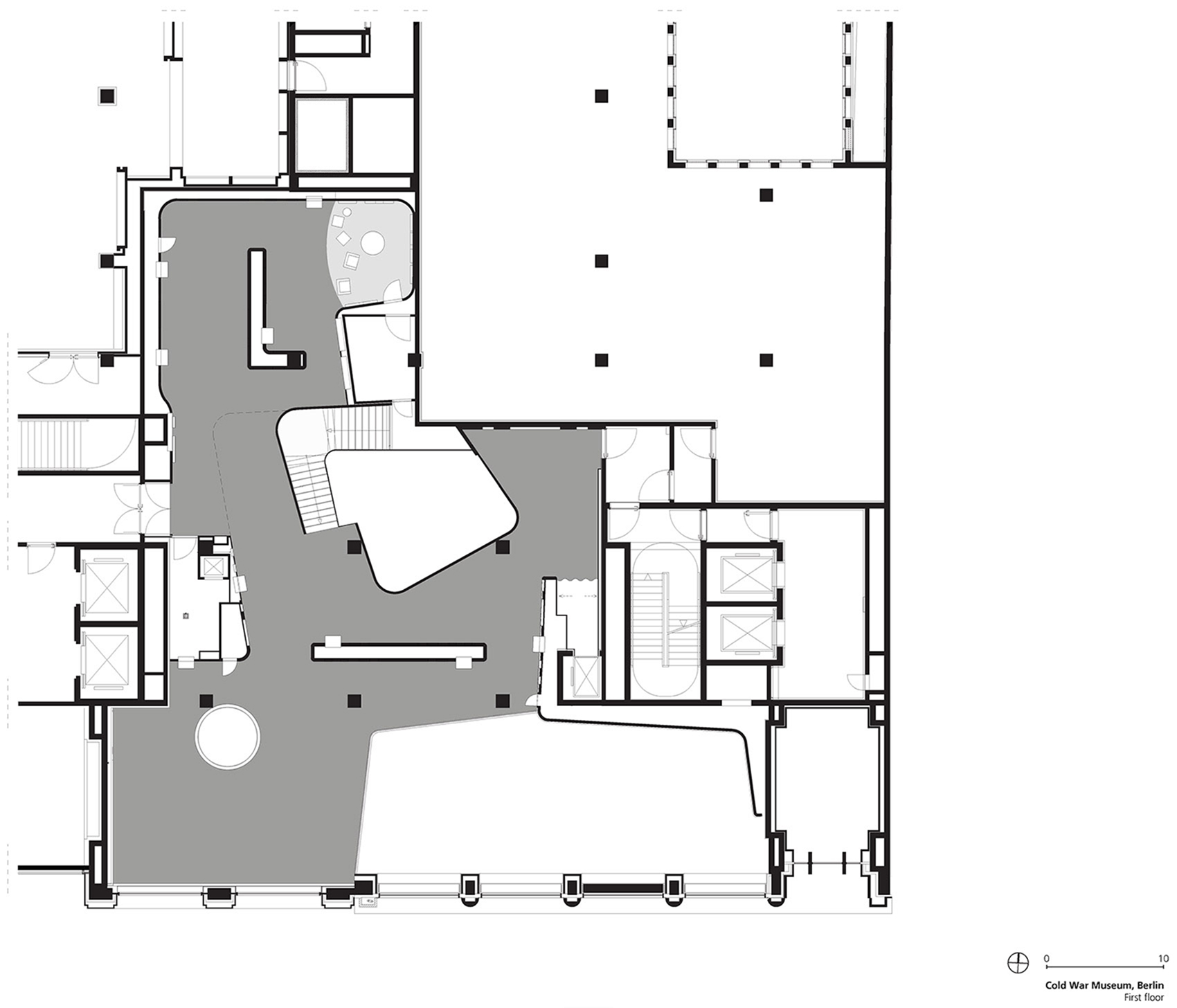
©TCHOBAN VOSS Architekten
项目信息
项目地点:Unter den Linden 14, 10117 Berlin, www.coldwarmuseum.de
客户:CWM COLD WAR Museum GmbH, Berlin
CEO 冷战博物馆:Carsten Kollmeier、CFO Harald Braun
项目面积:1600㎡
楼层 展览:2
开幕:2022 年 11 月
建筑师:Sergei Tchoban
设计“铁幕”:Vanda Sakhatska
项目合作伙伴:Stephan Lohre
项目负责人:Valeria Kashirina
团队:Lev Chestakov, Merle Kleinschumacher
金属结构:Dieringer Blechfertigung OHG,柏林
涂鸦艺术:Enrico Mau aka Demut;Fabian Brückner aka Kirk
Flooring:Sika Deutschland GmbH,斯图加特
木工工作:WEIGEL GmbH, Neustadt/Siebenhitz
摄影师:Ilya Ivanov
版权©策站网cezn.cn,欢迎转发,禁止以策站编辑版本进行任何形式转载